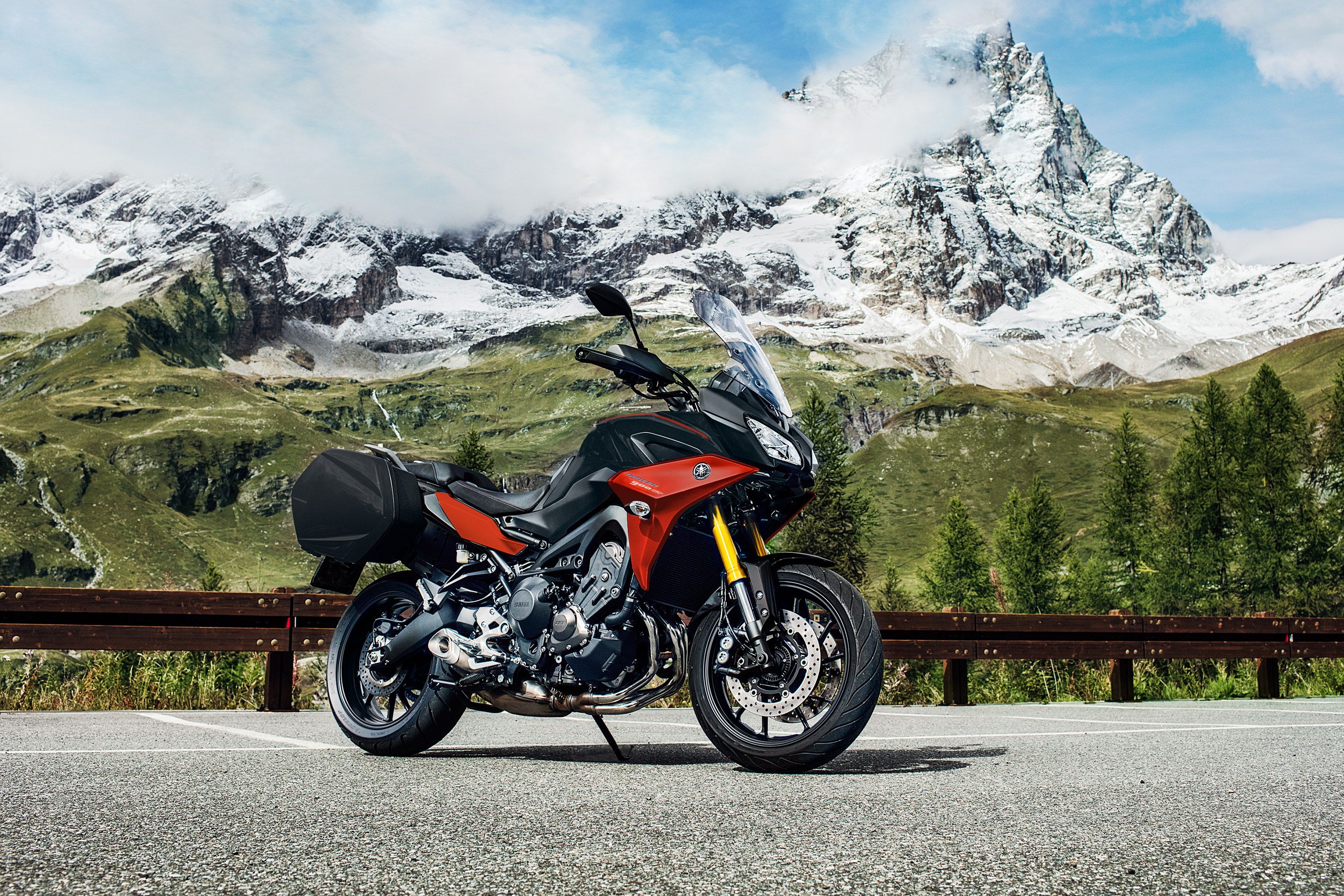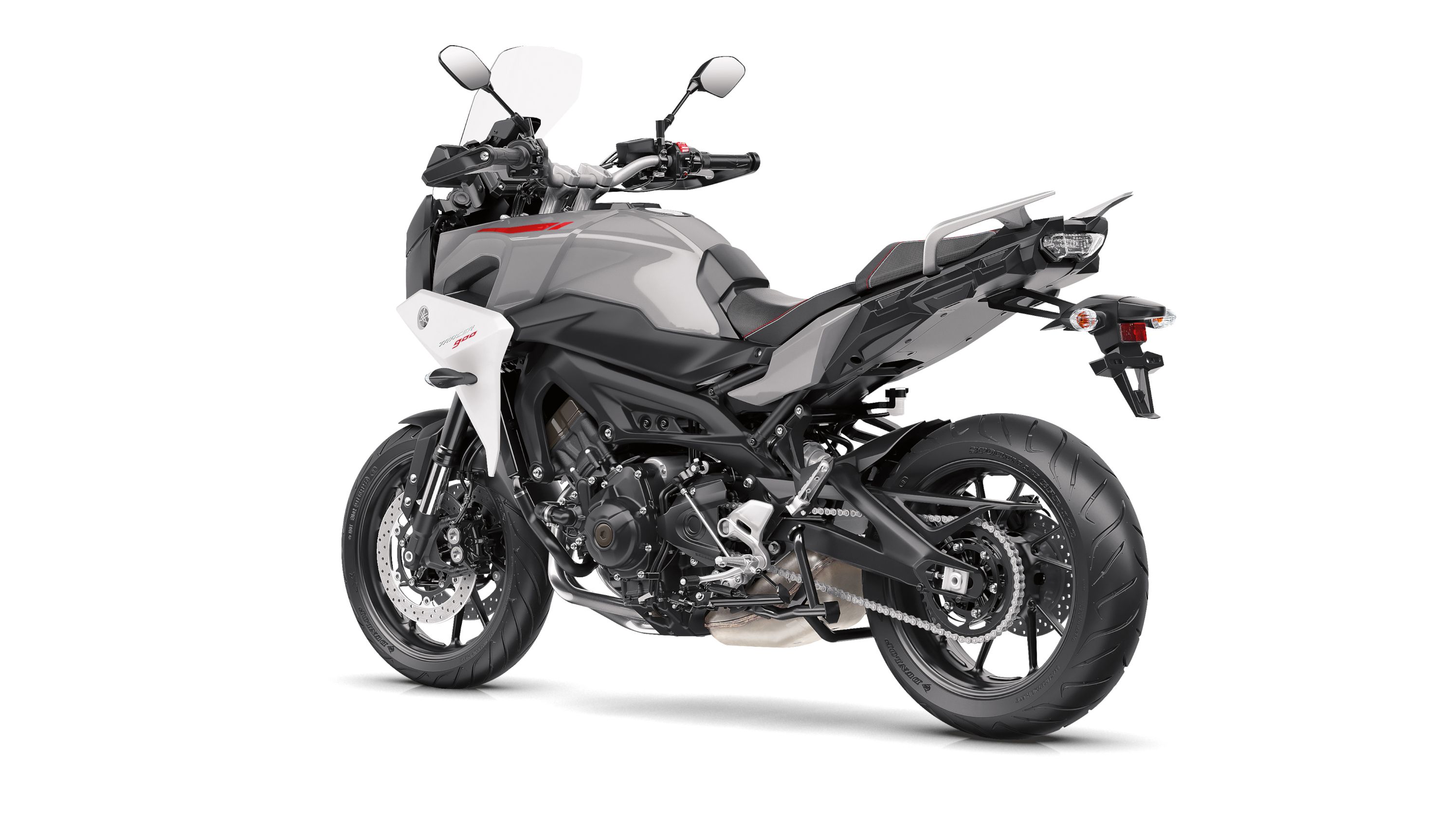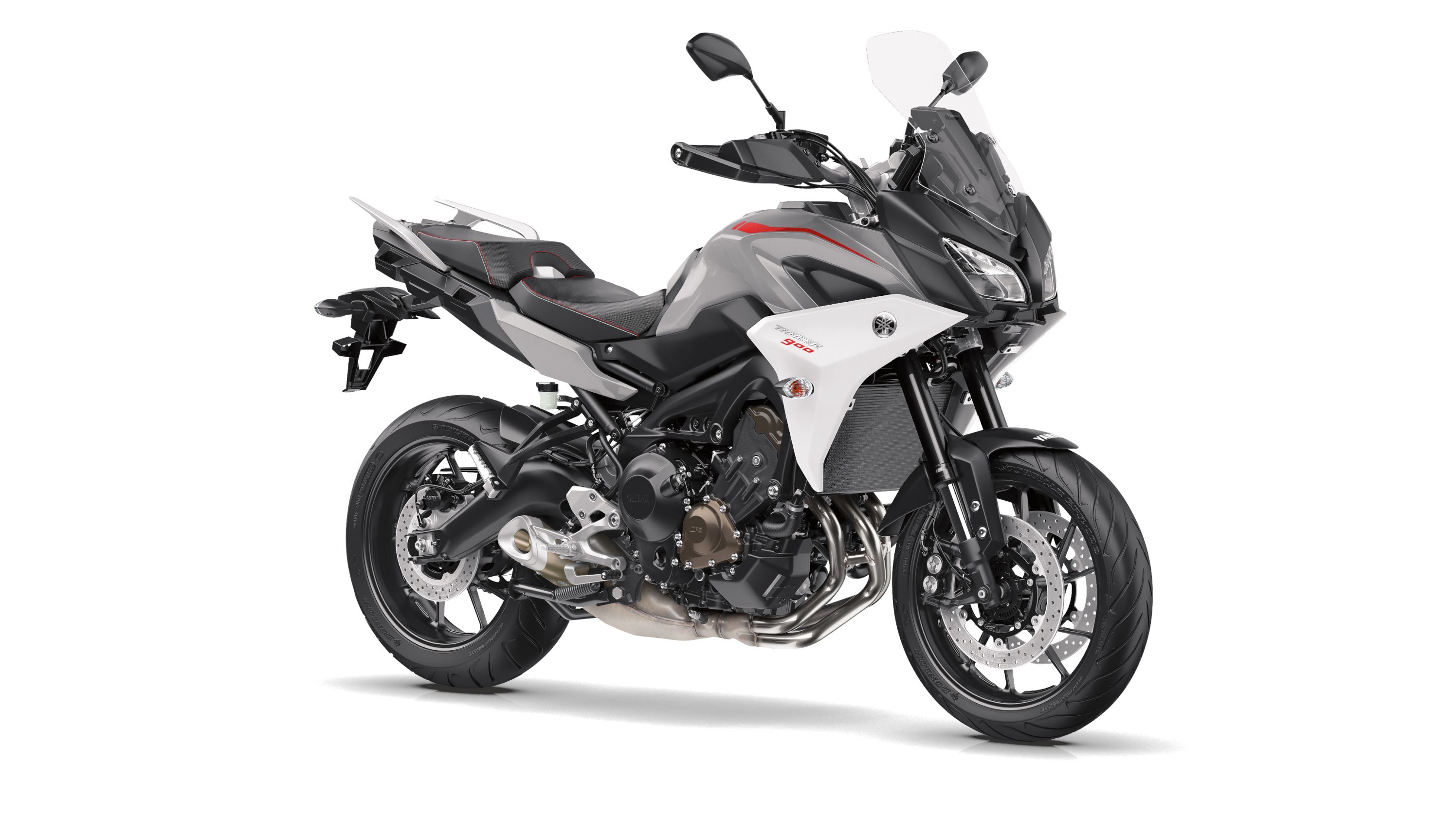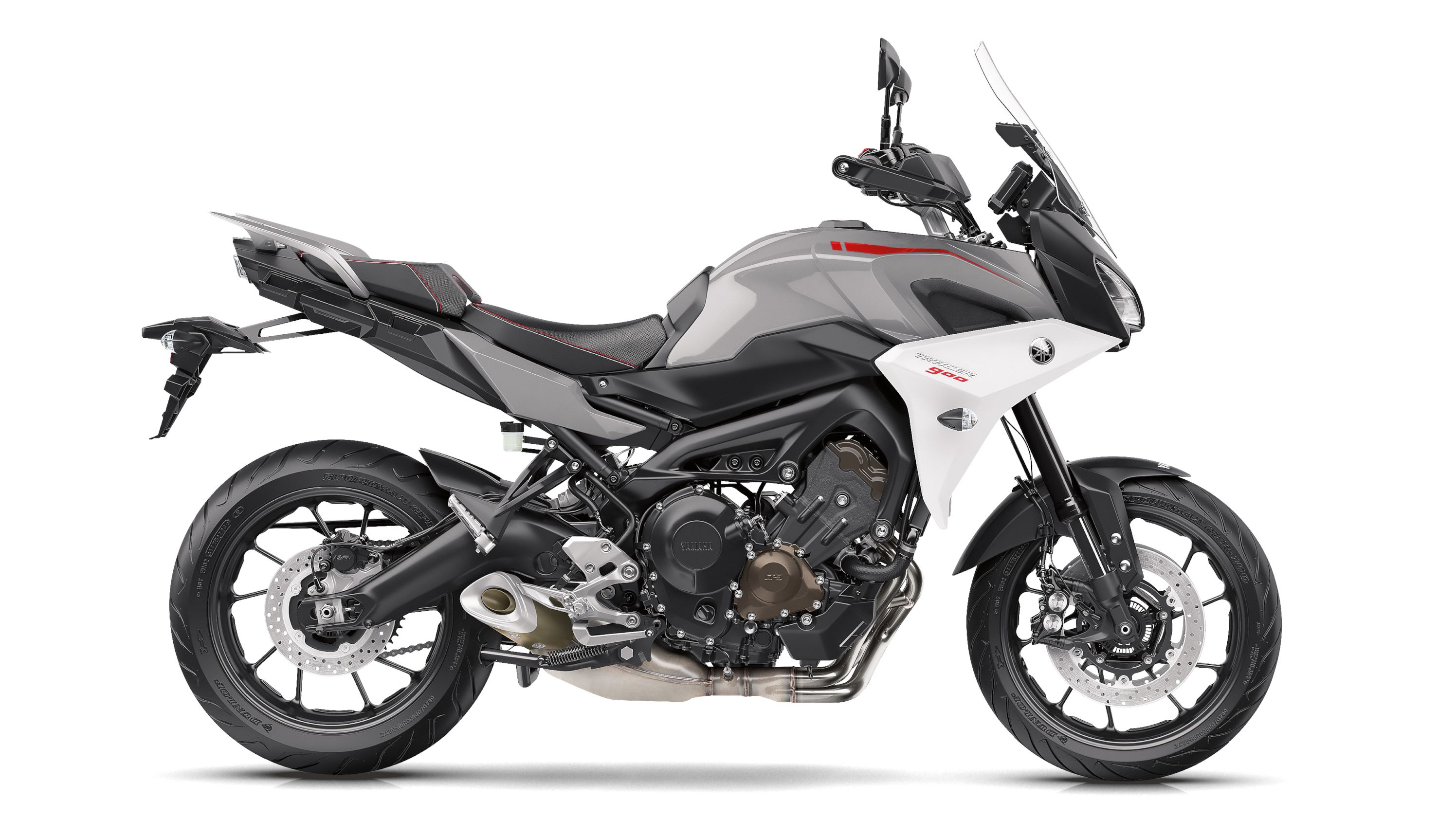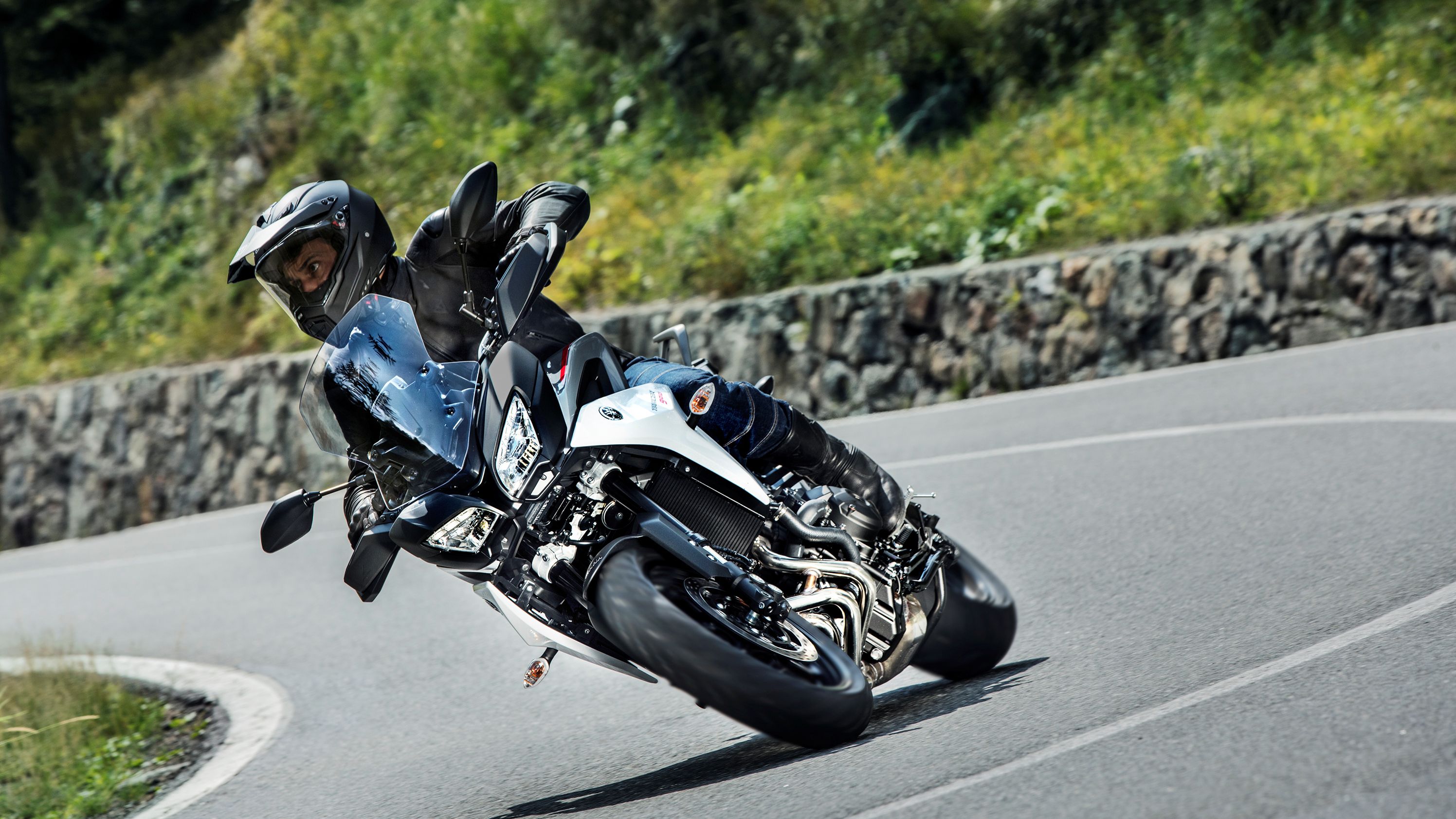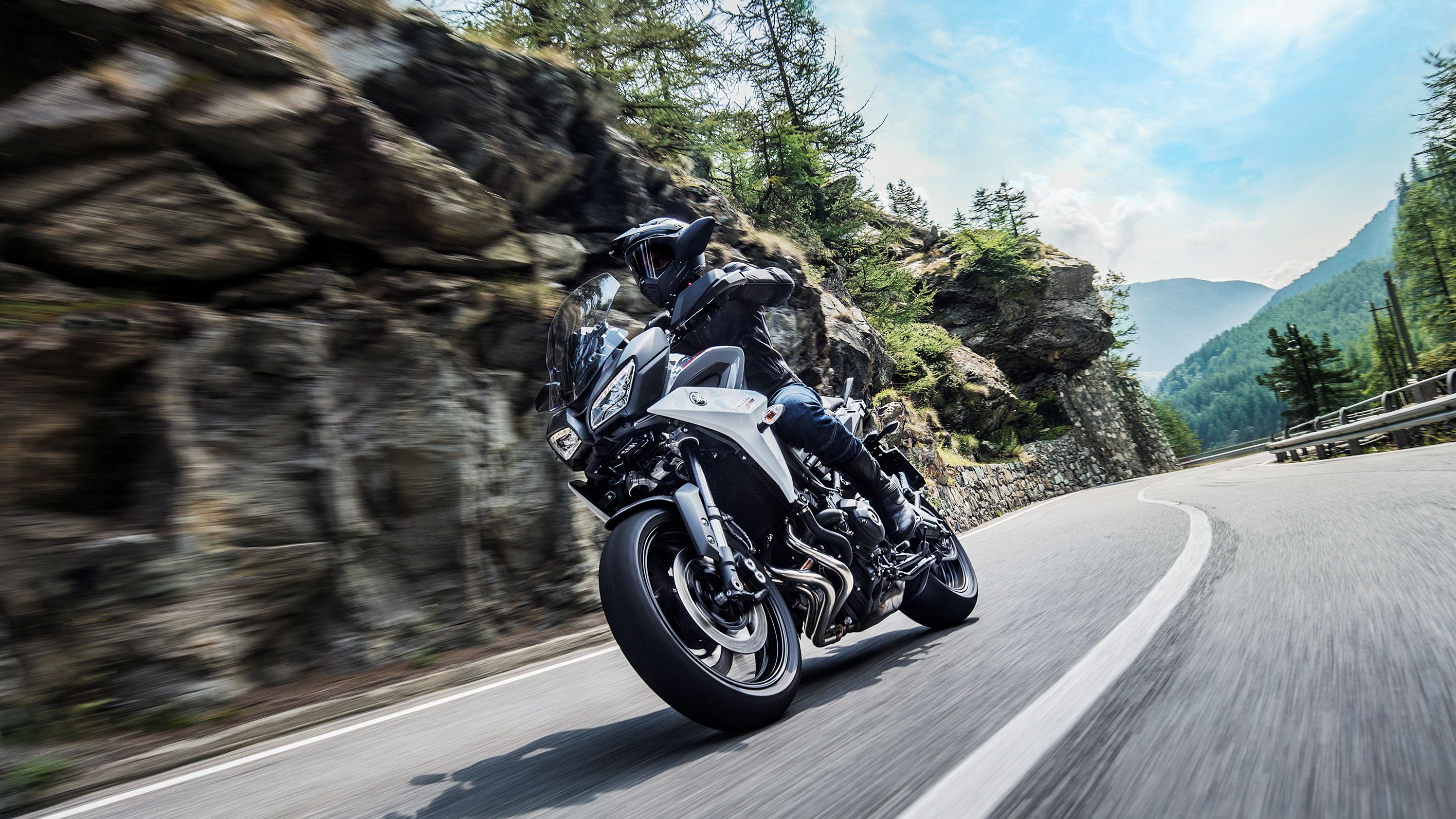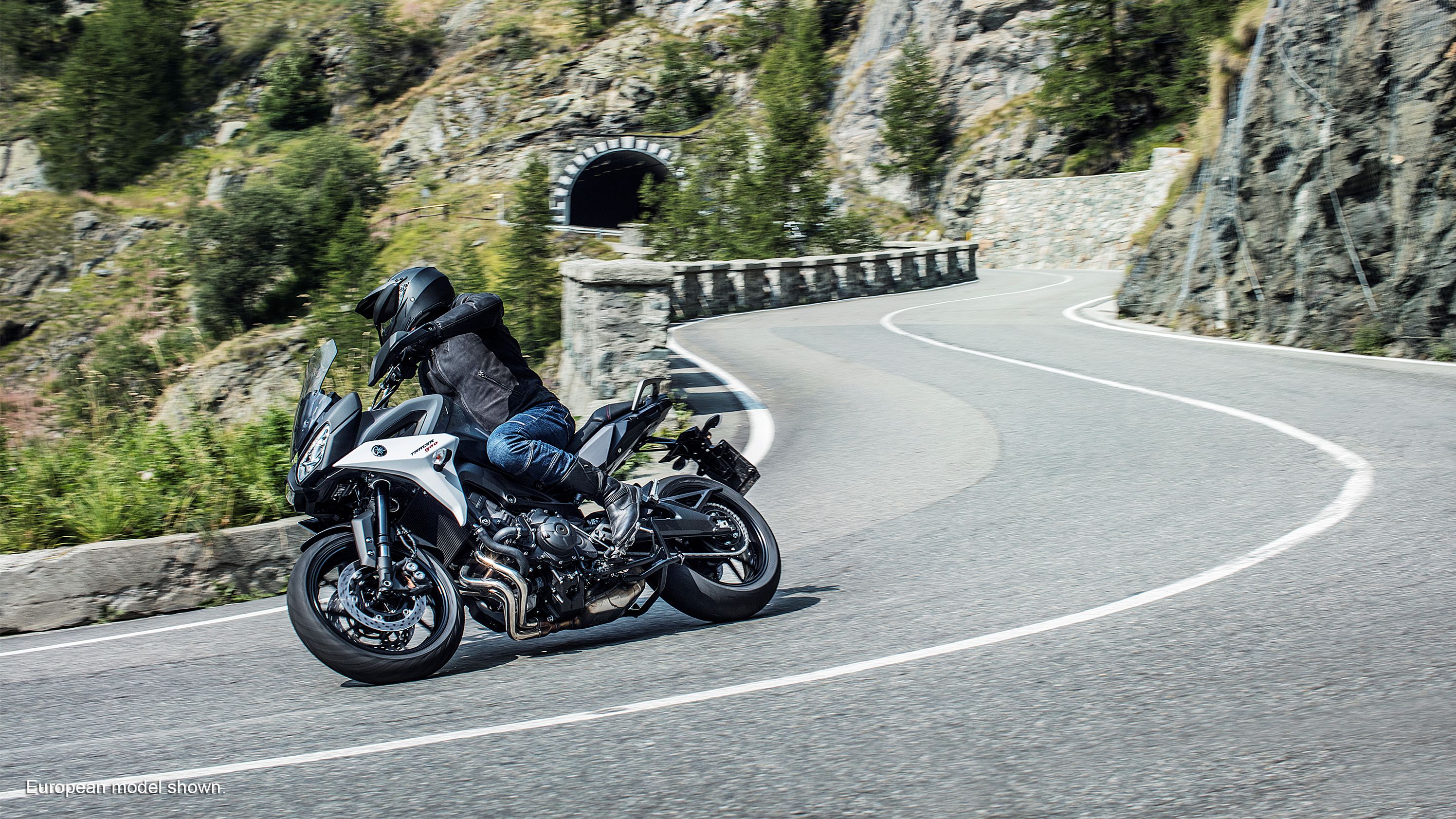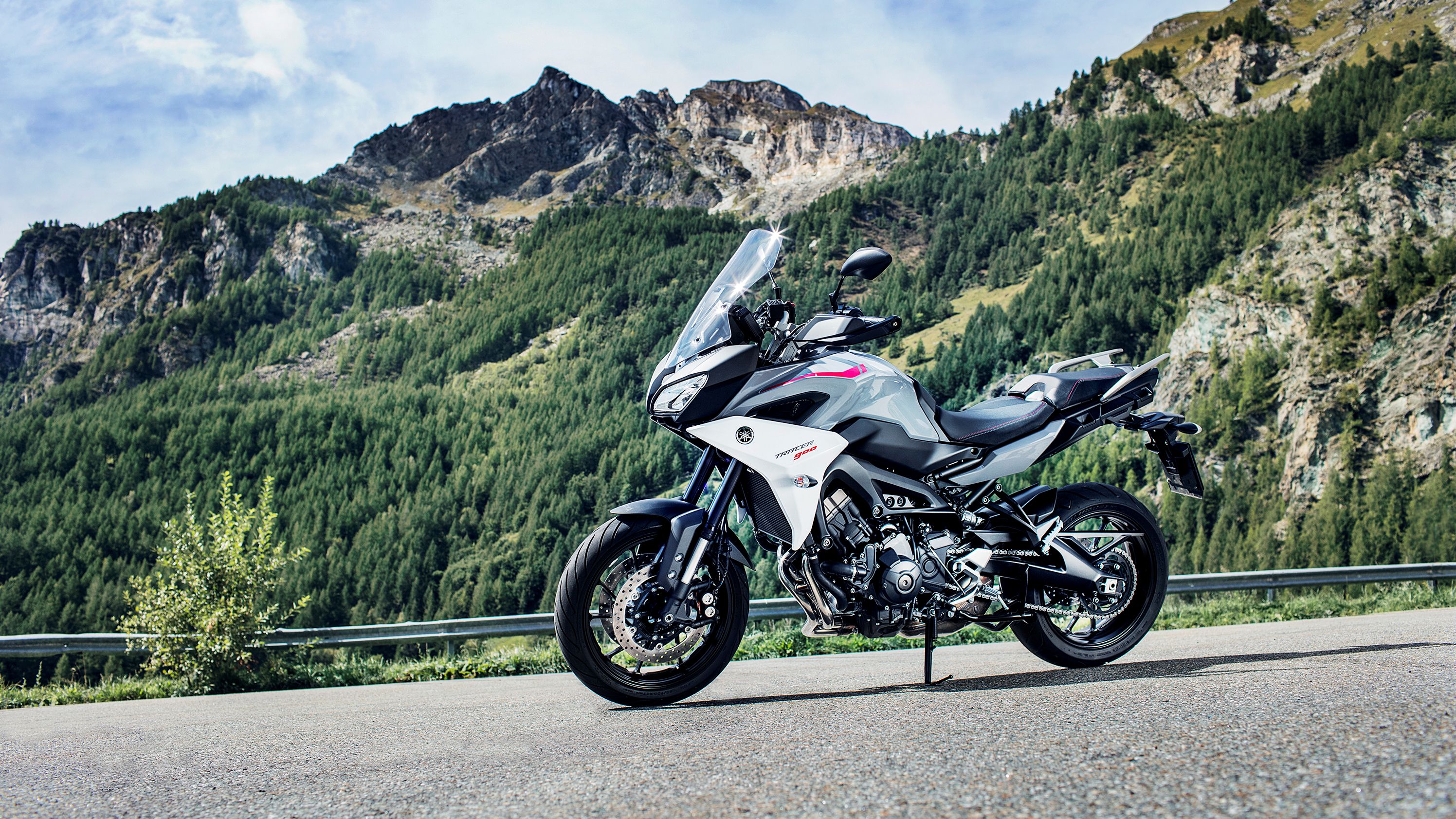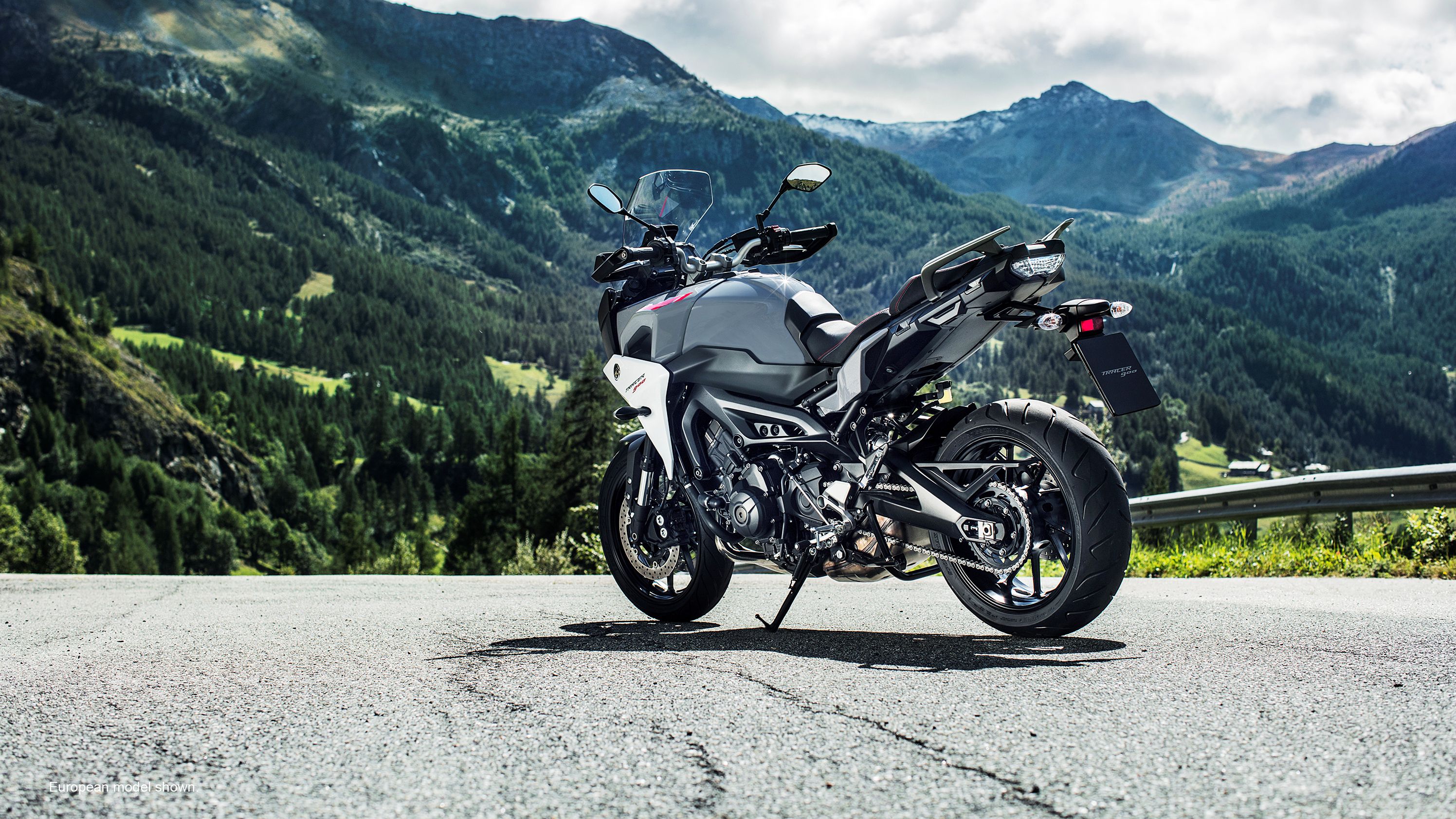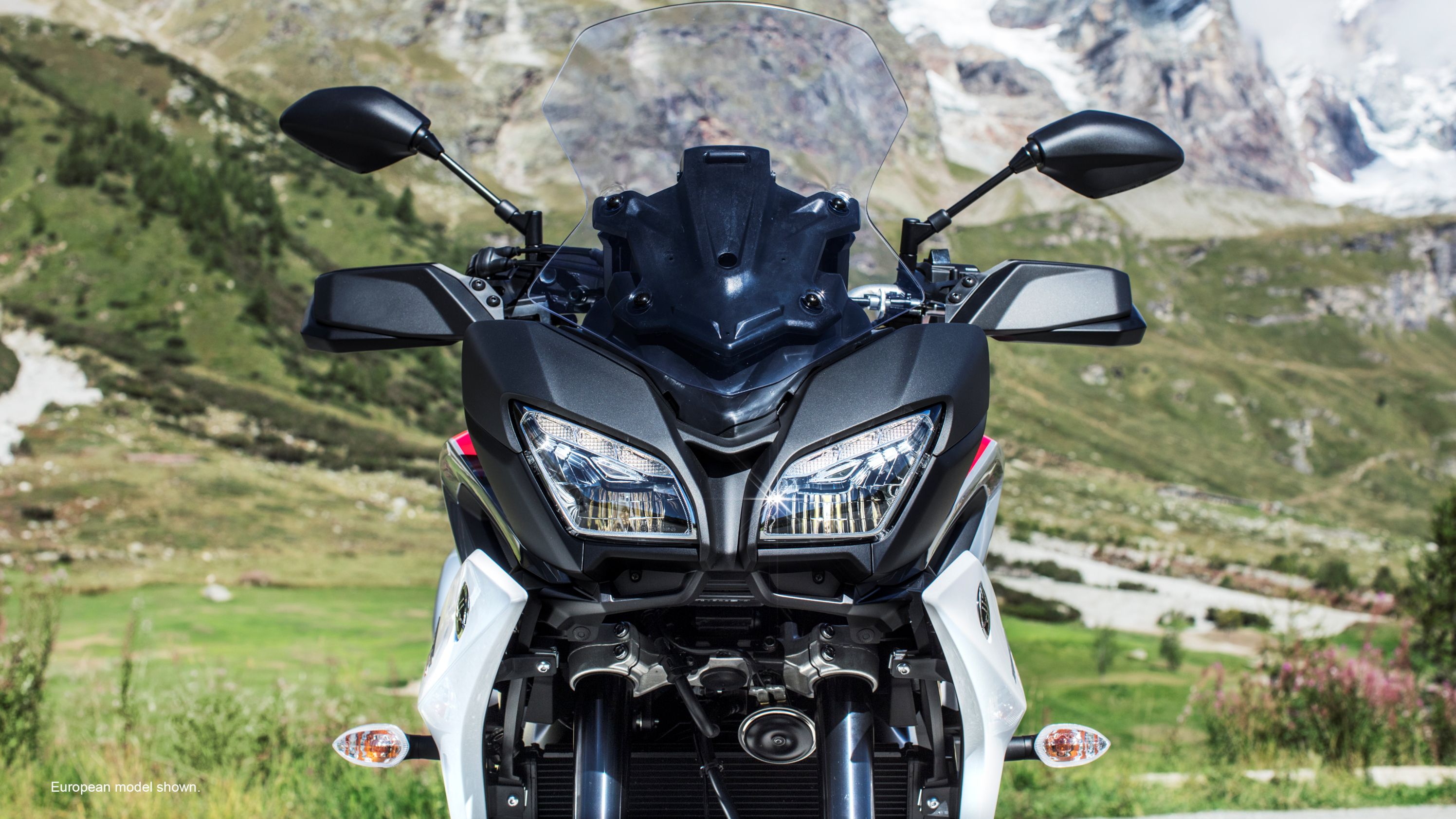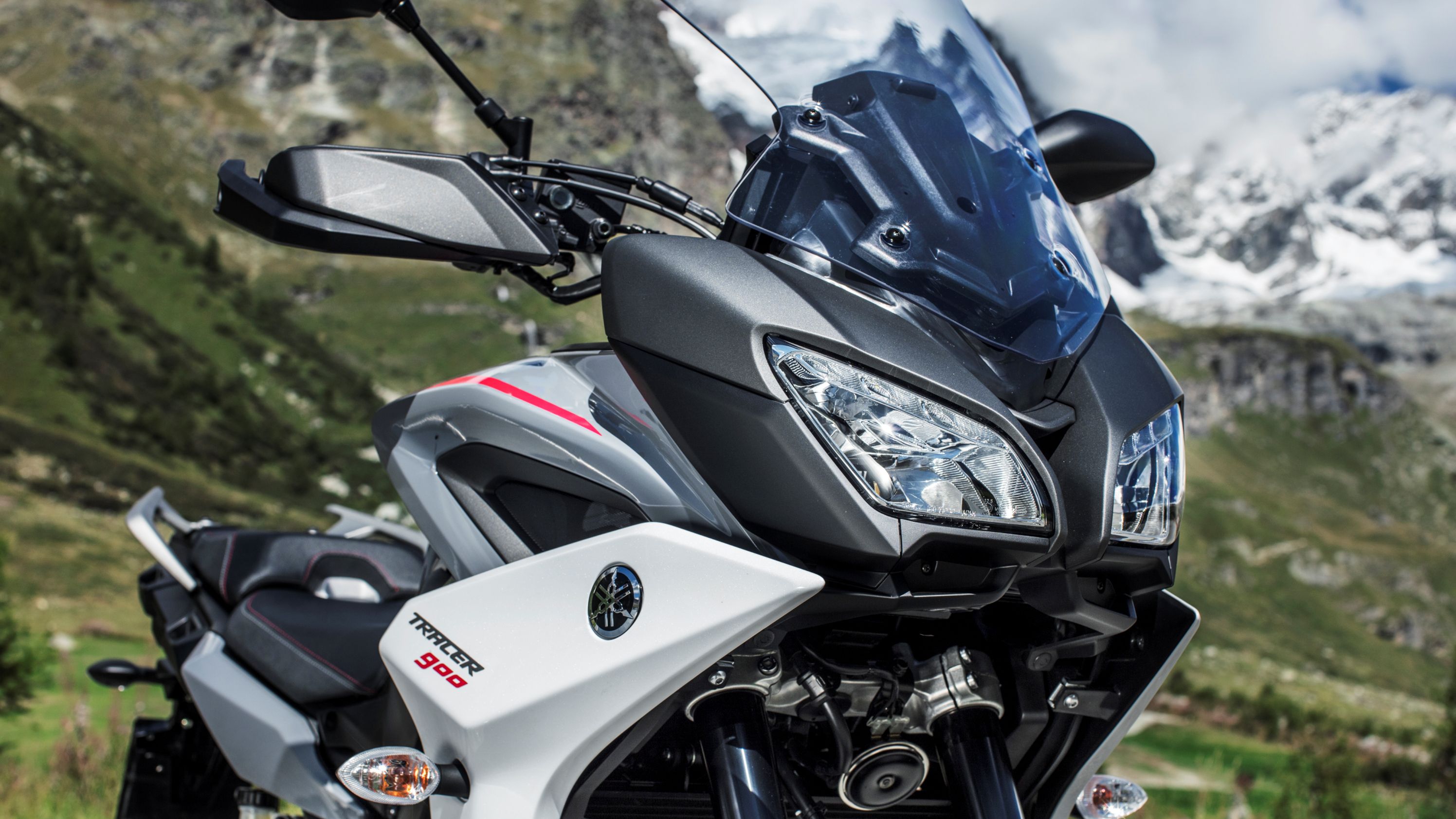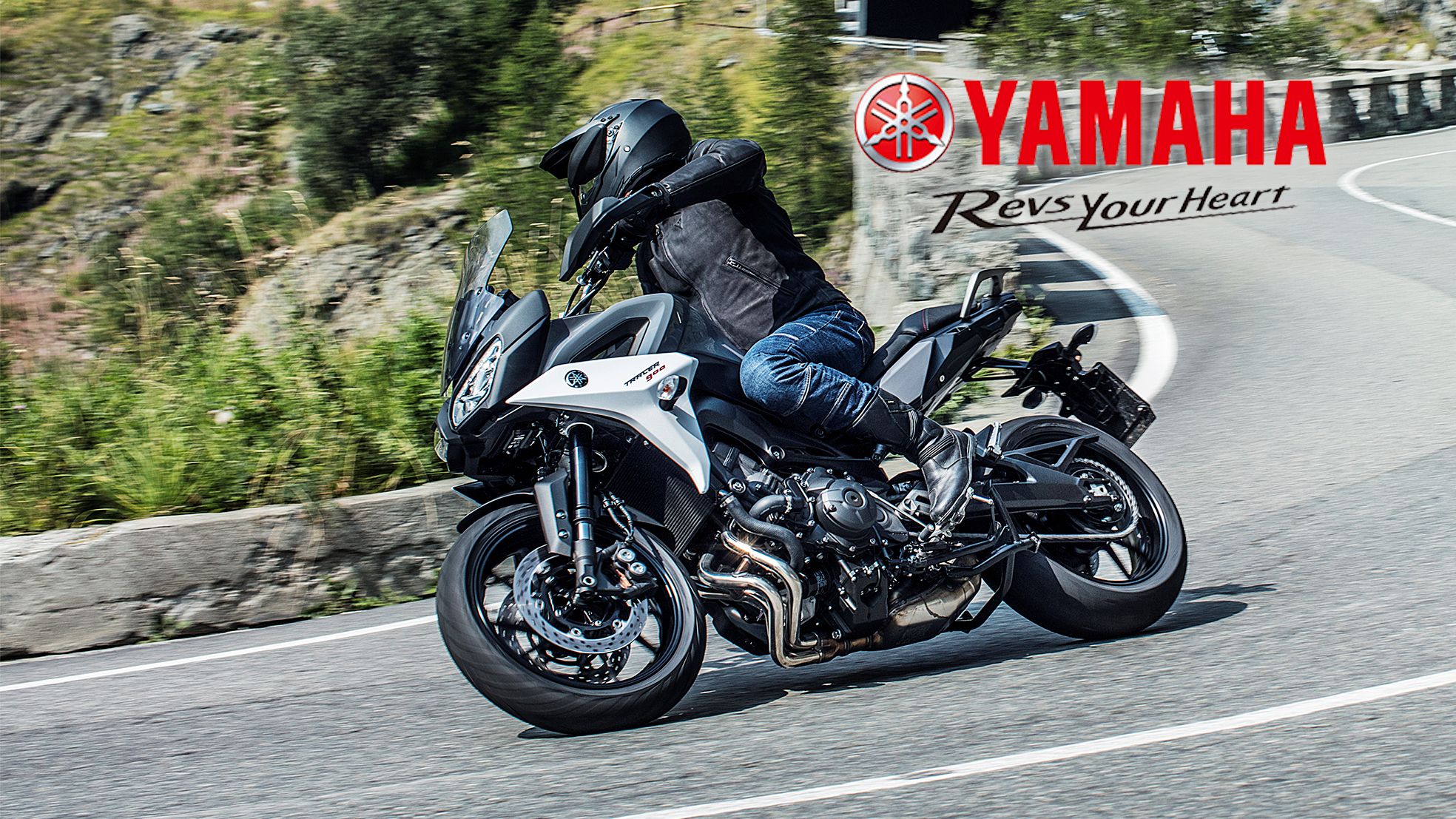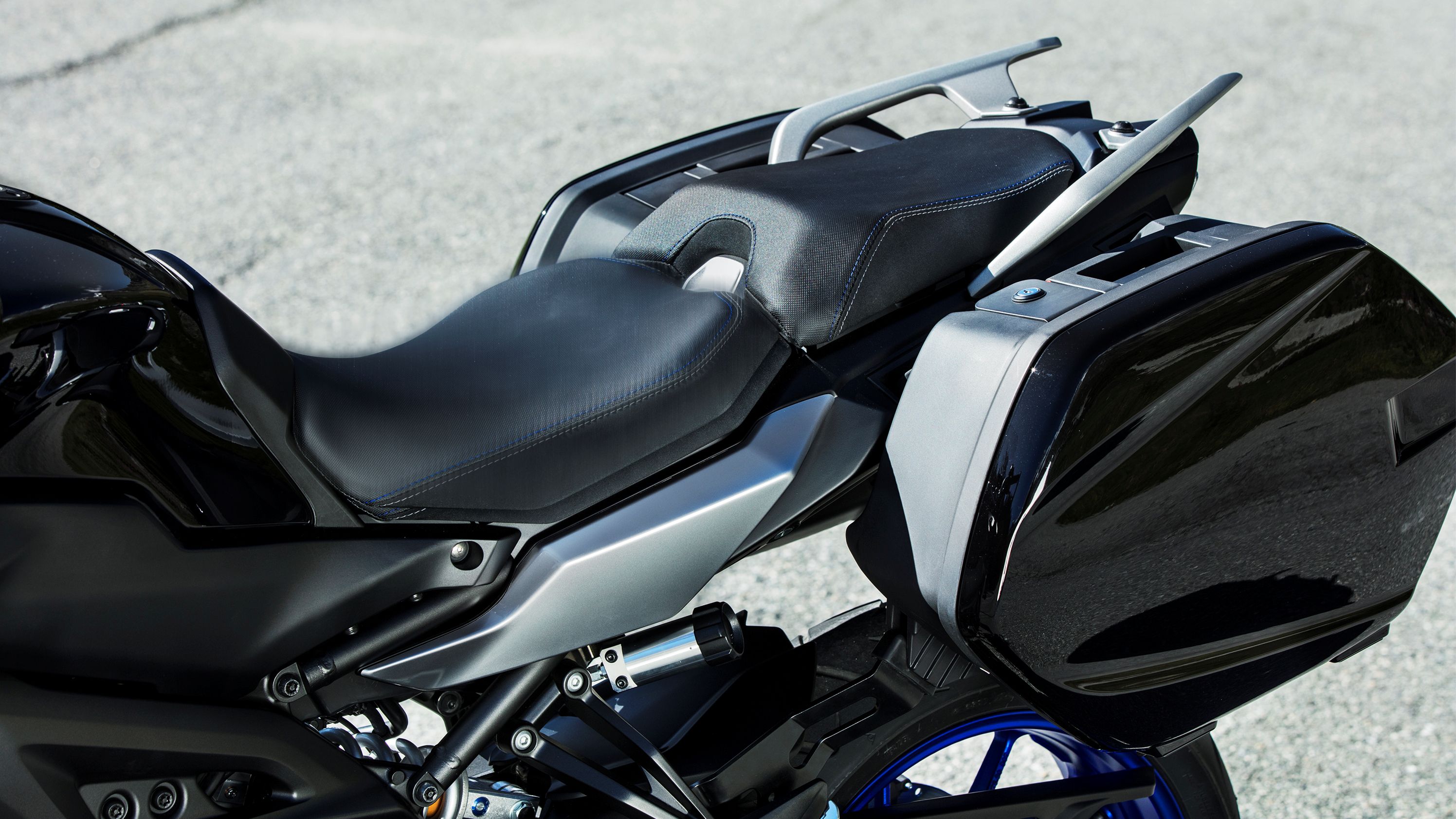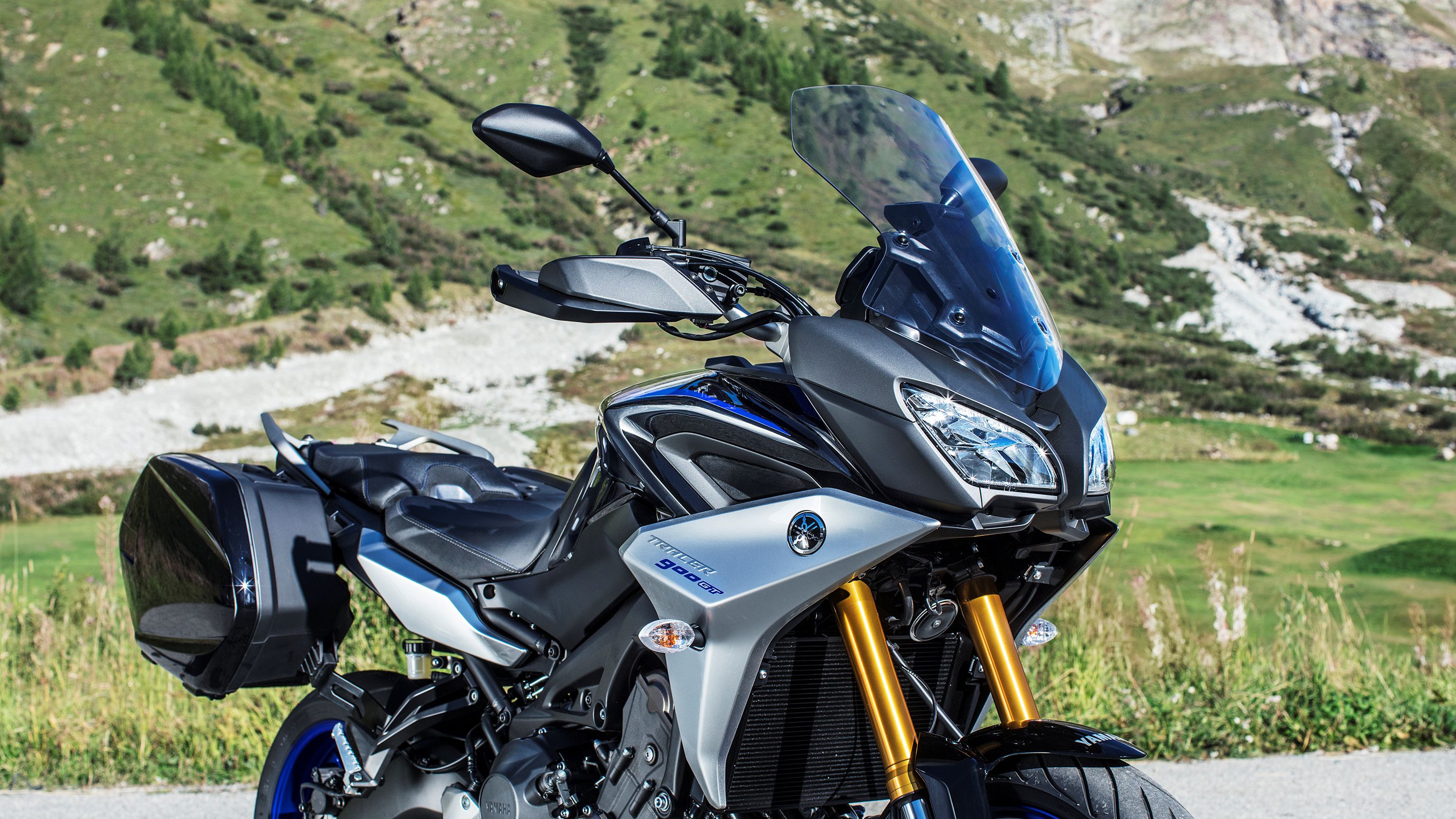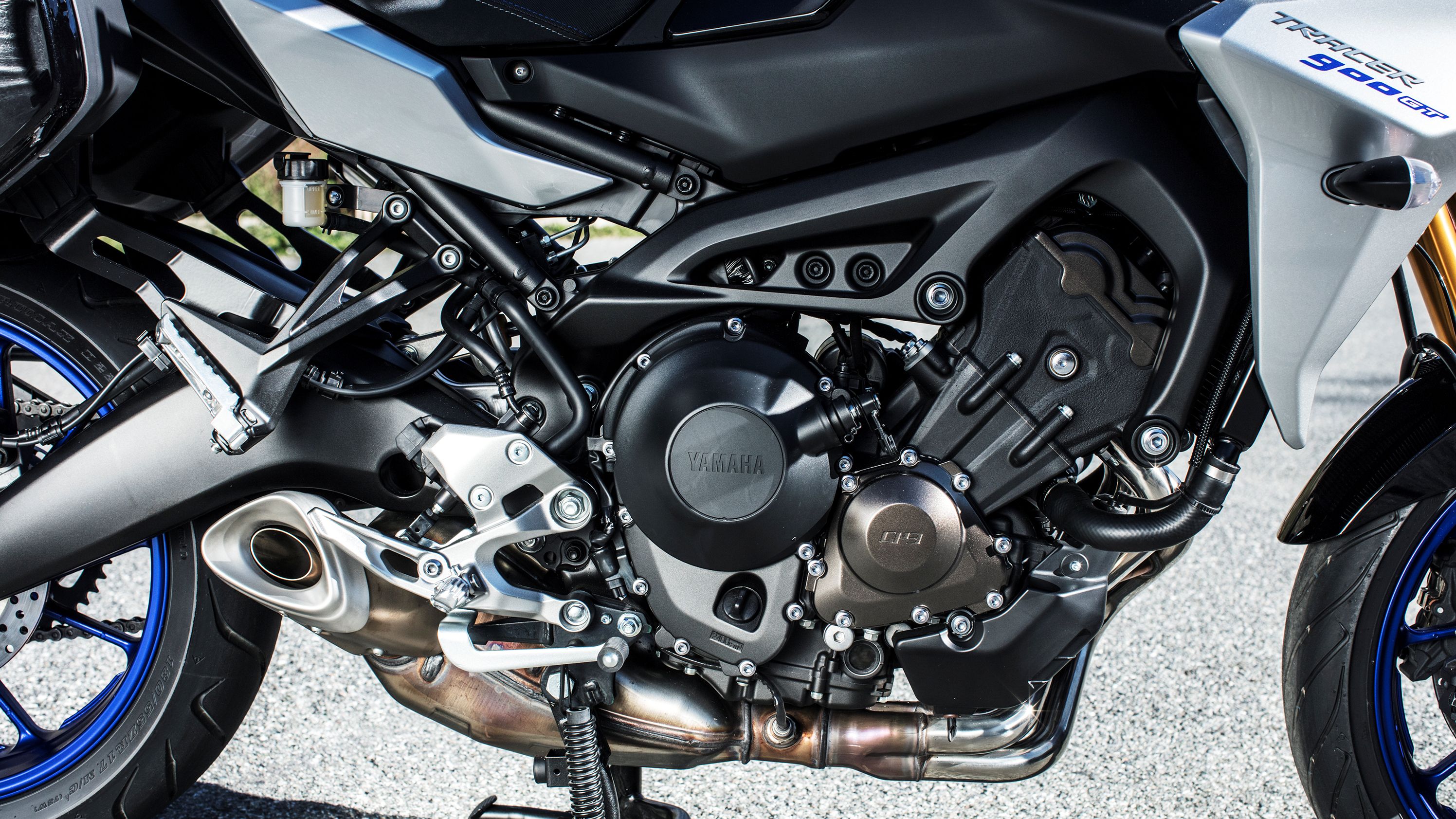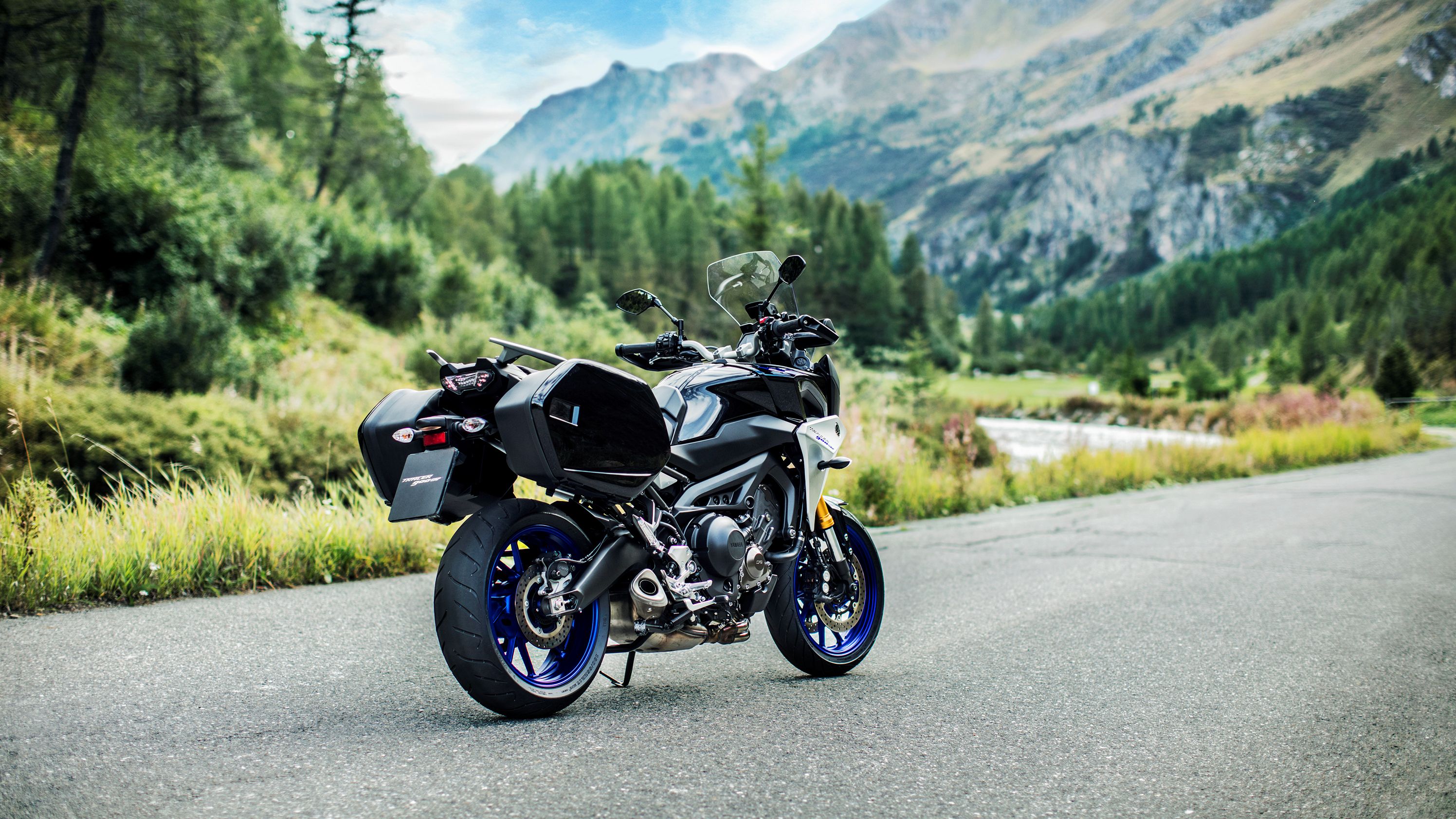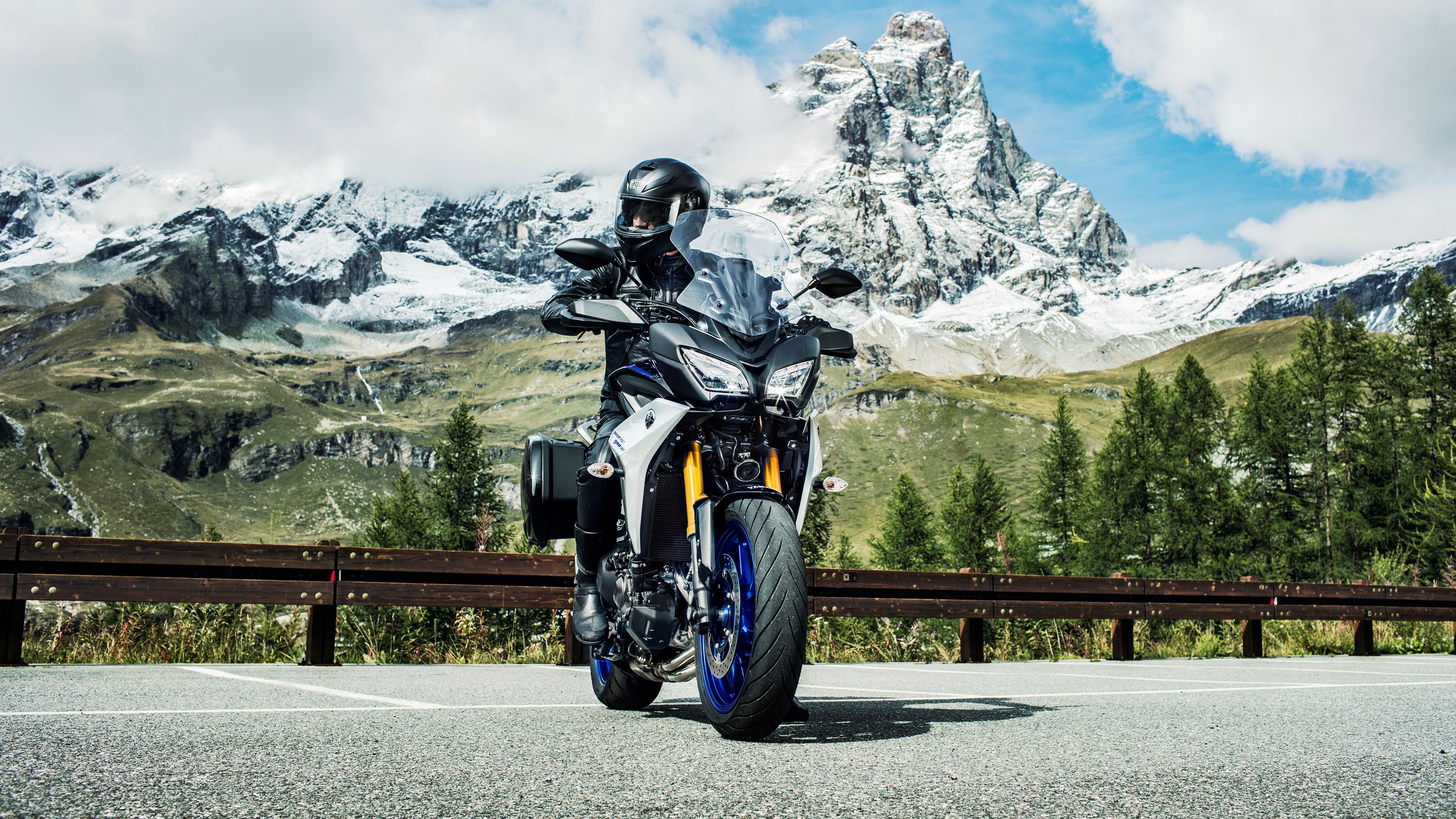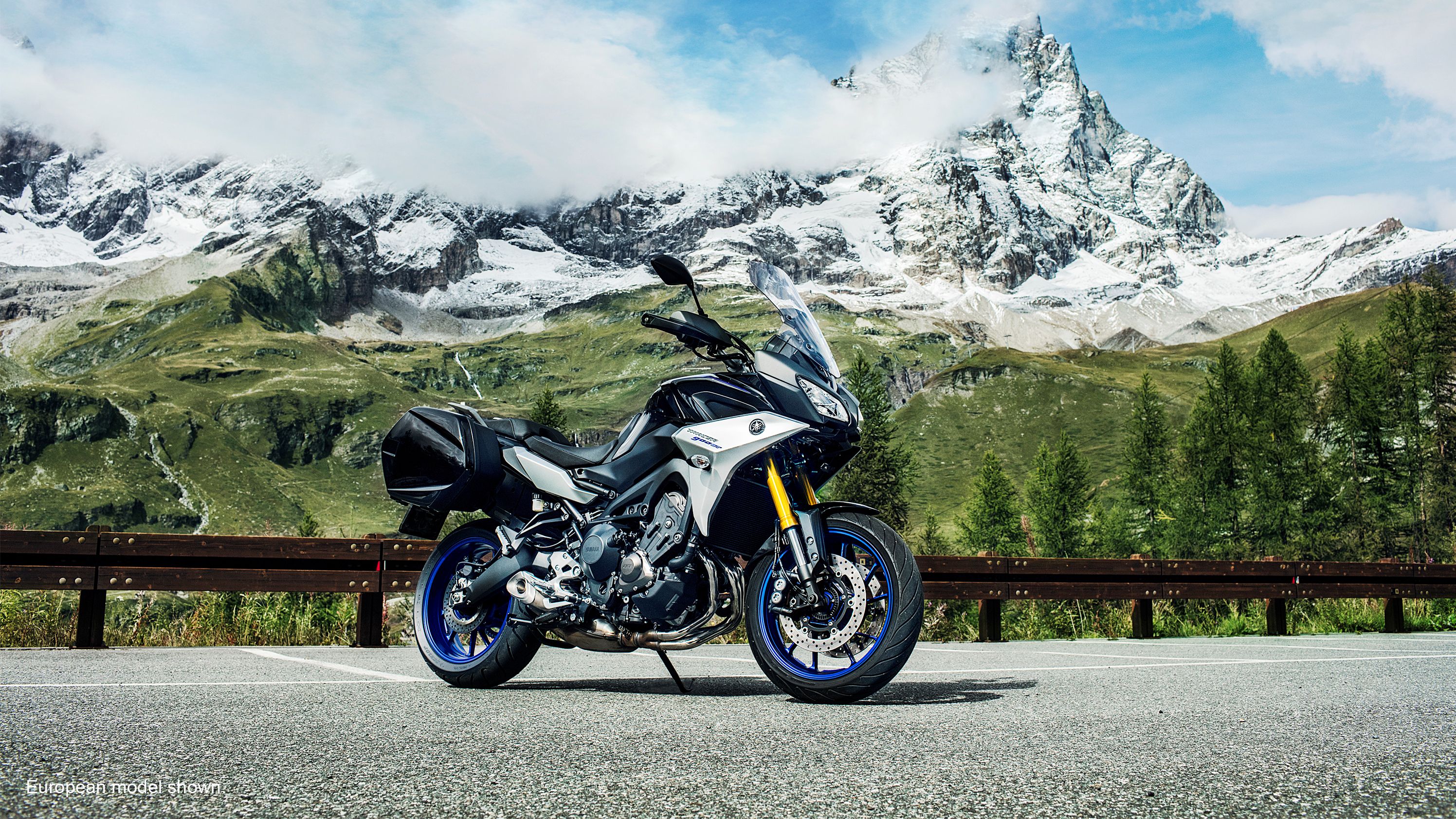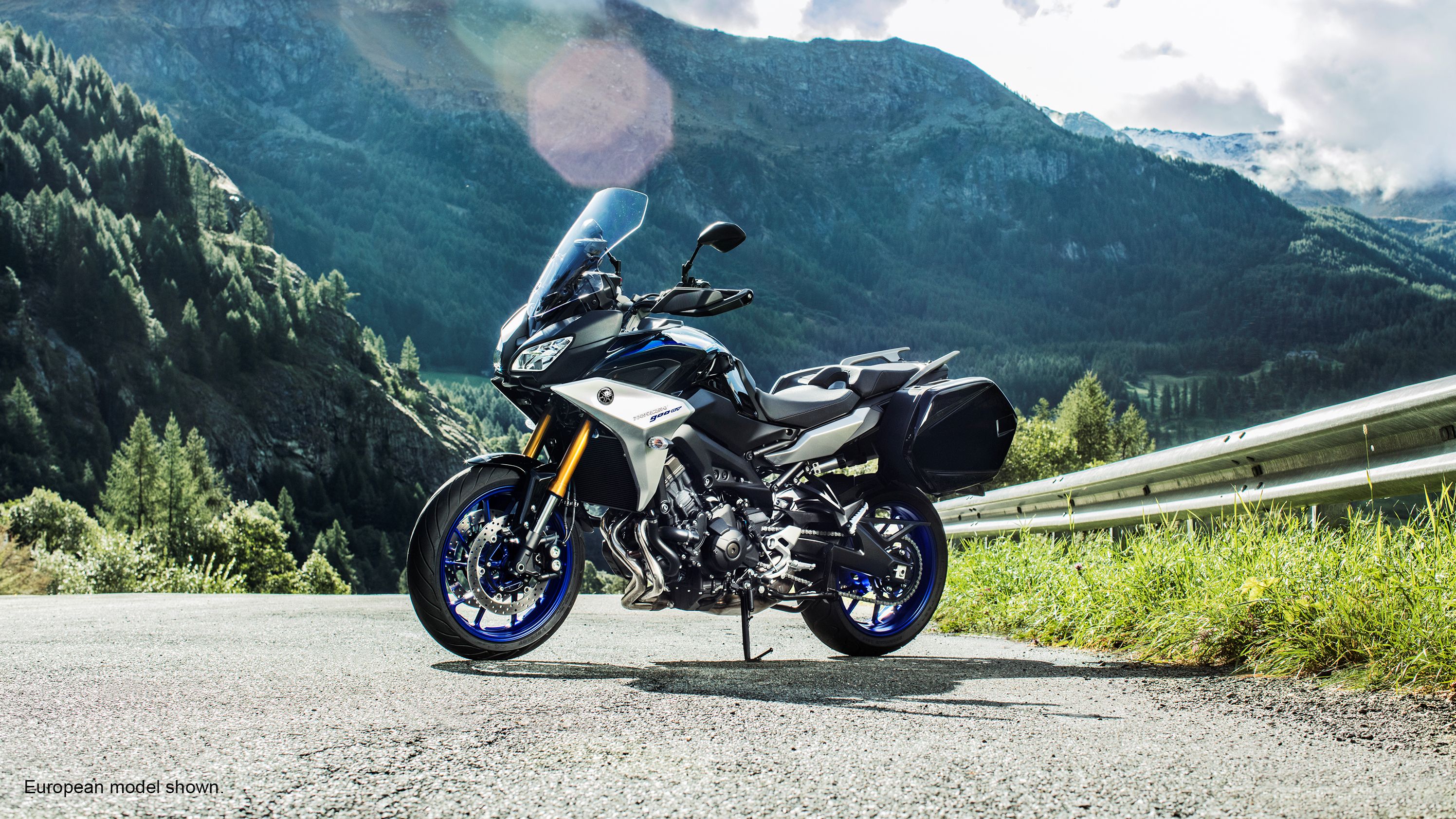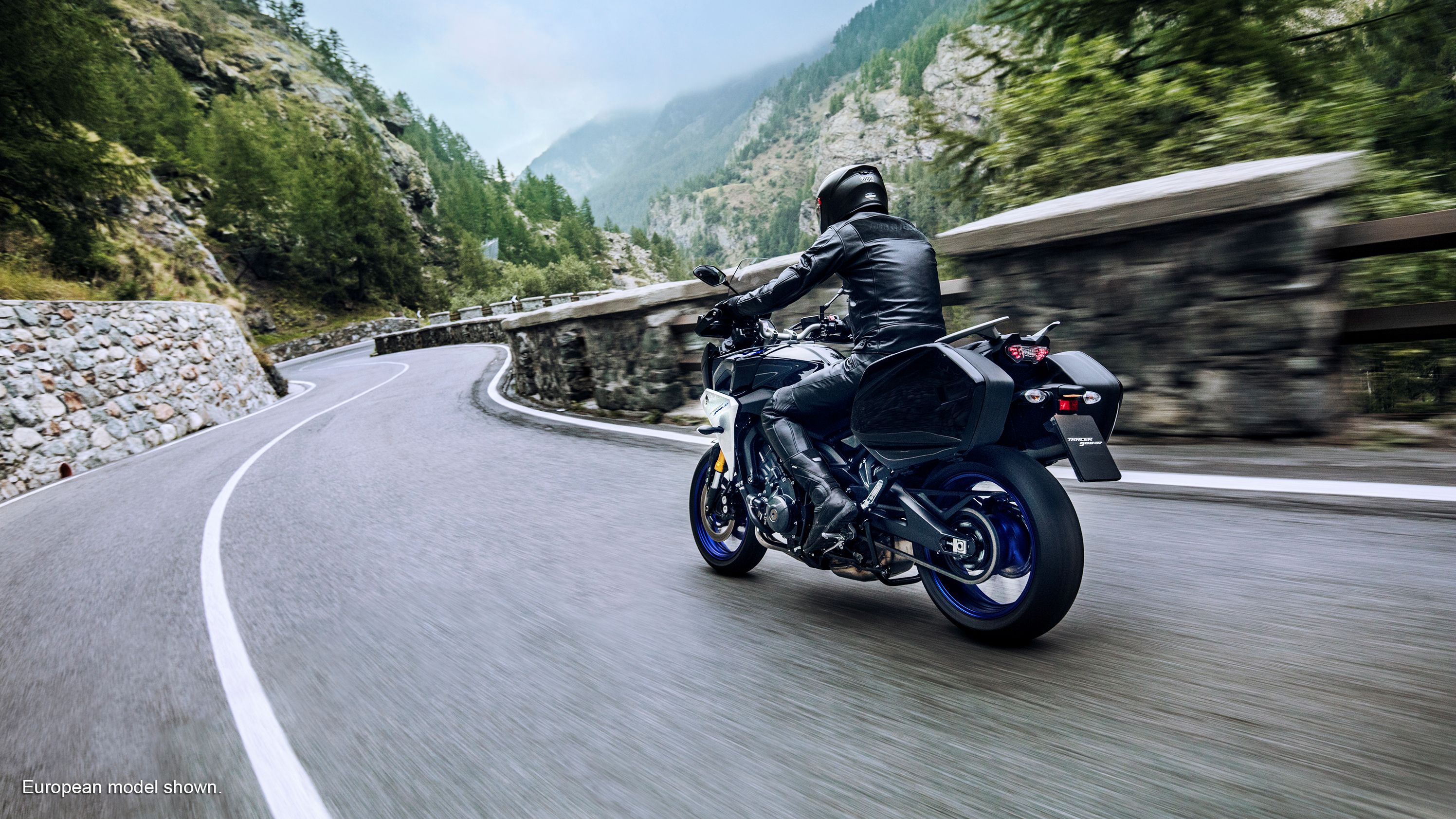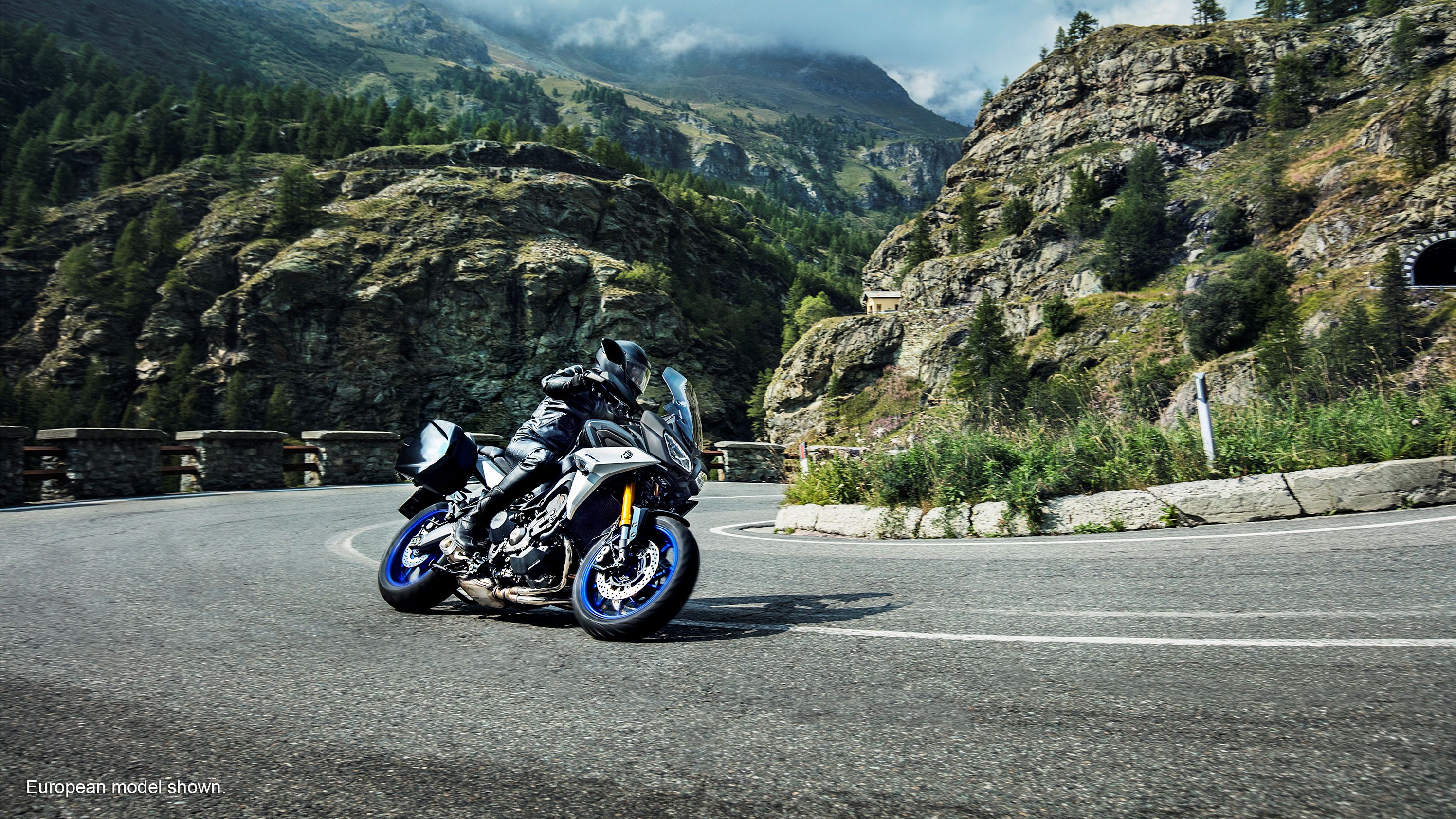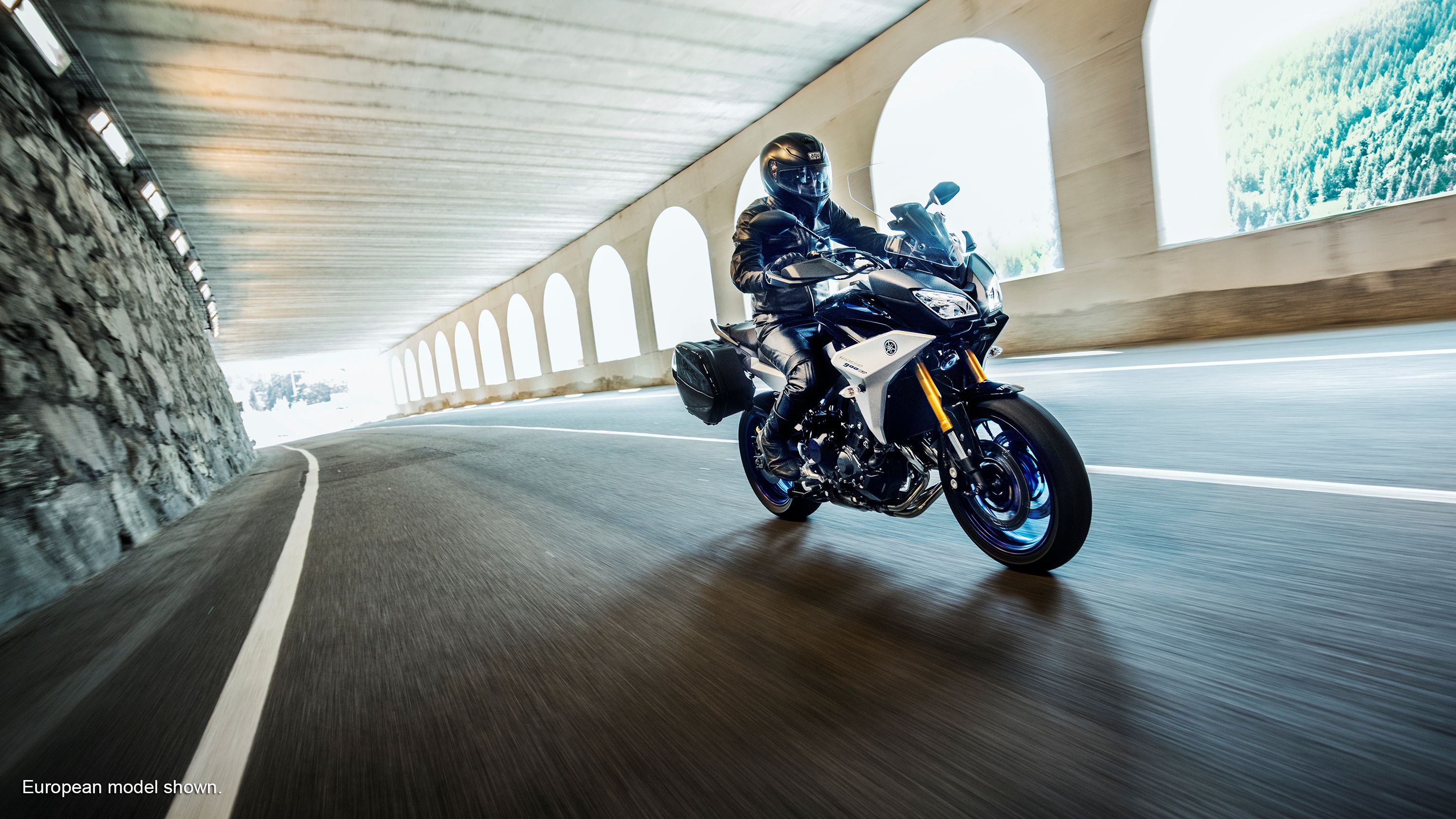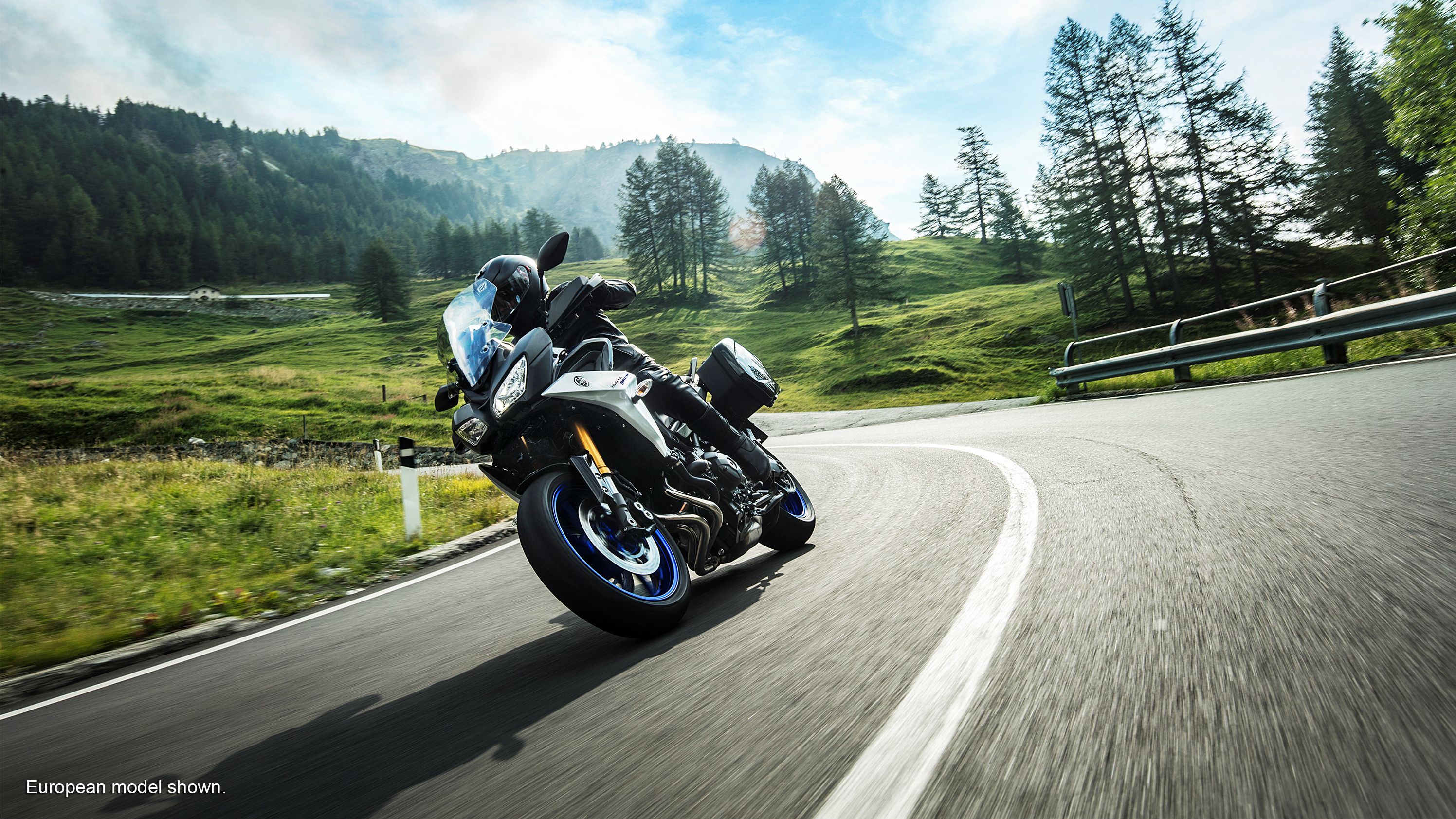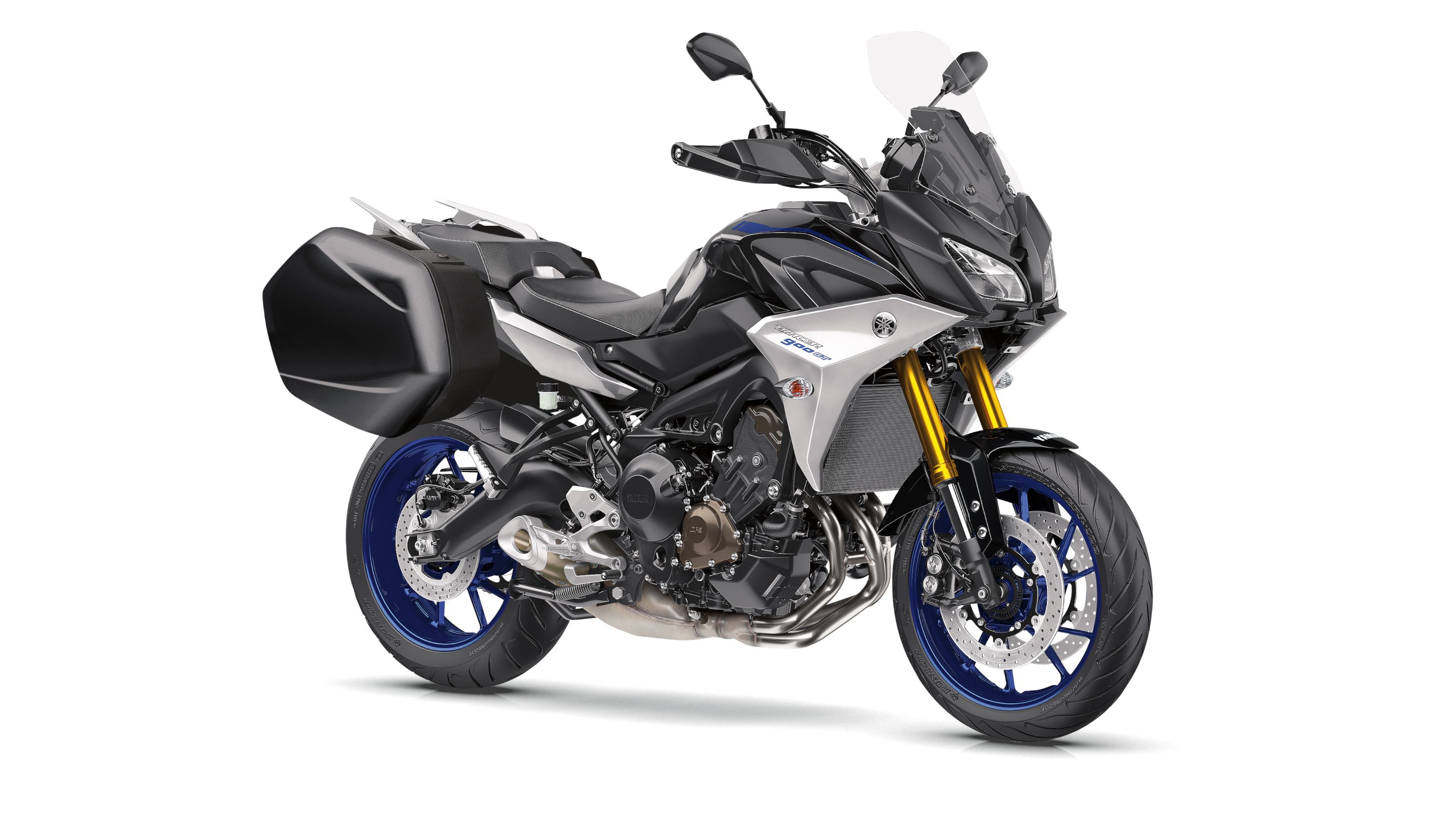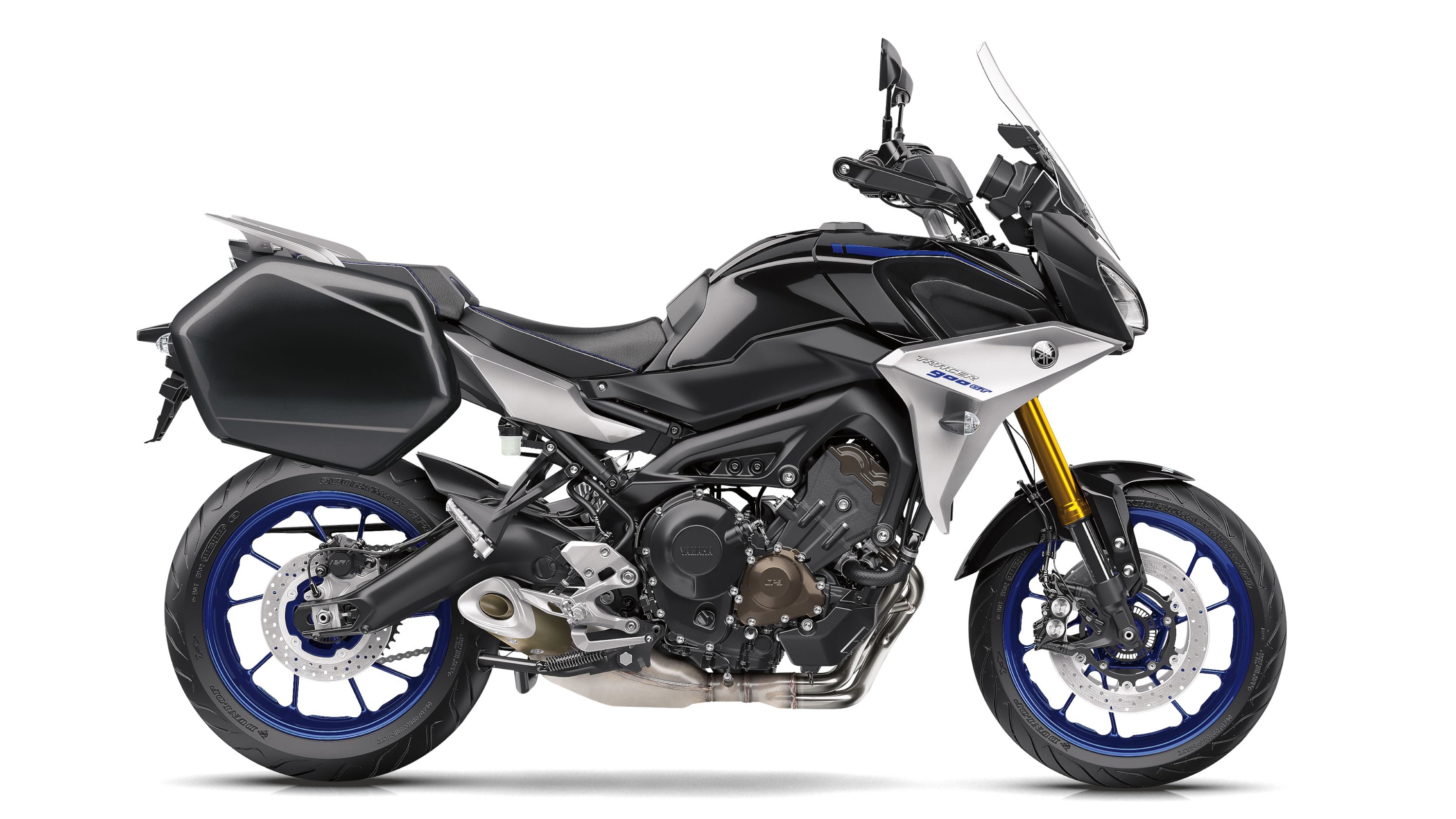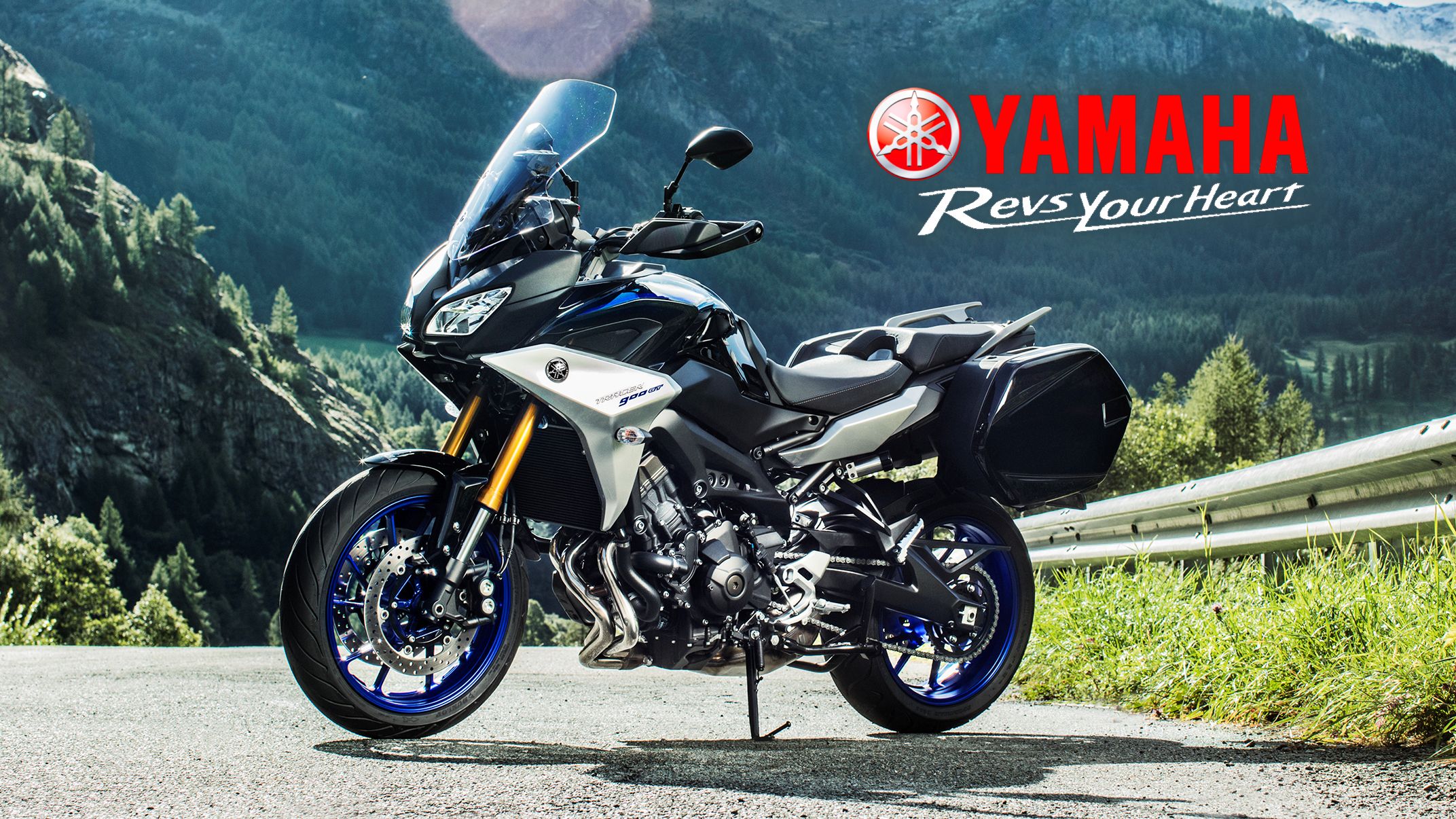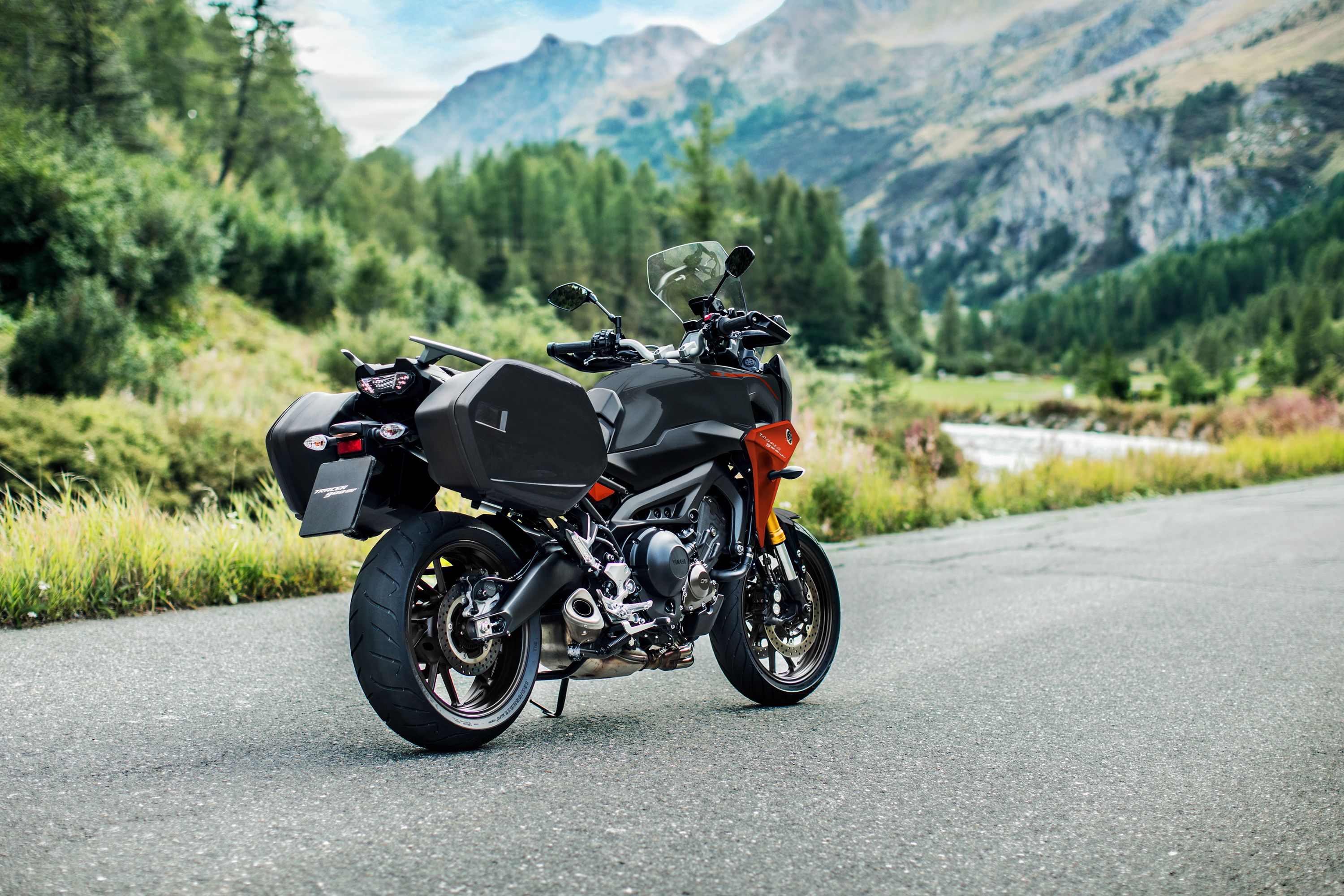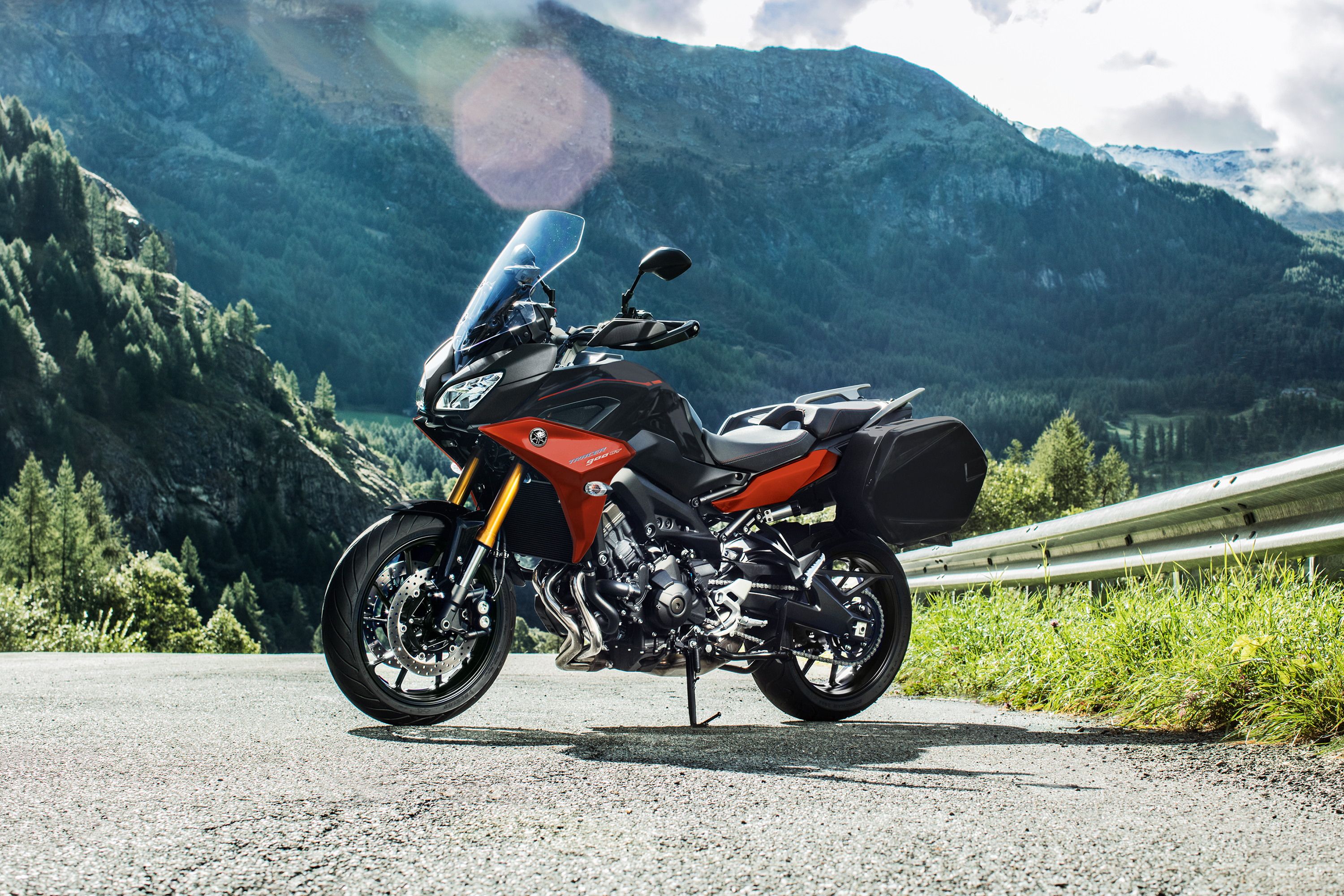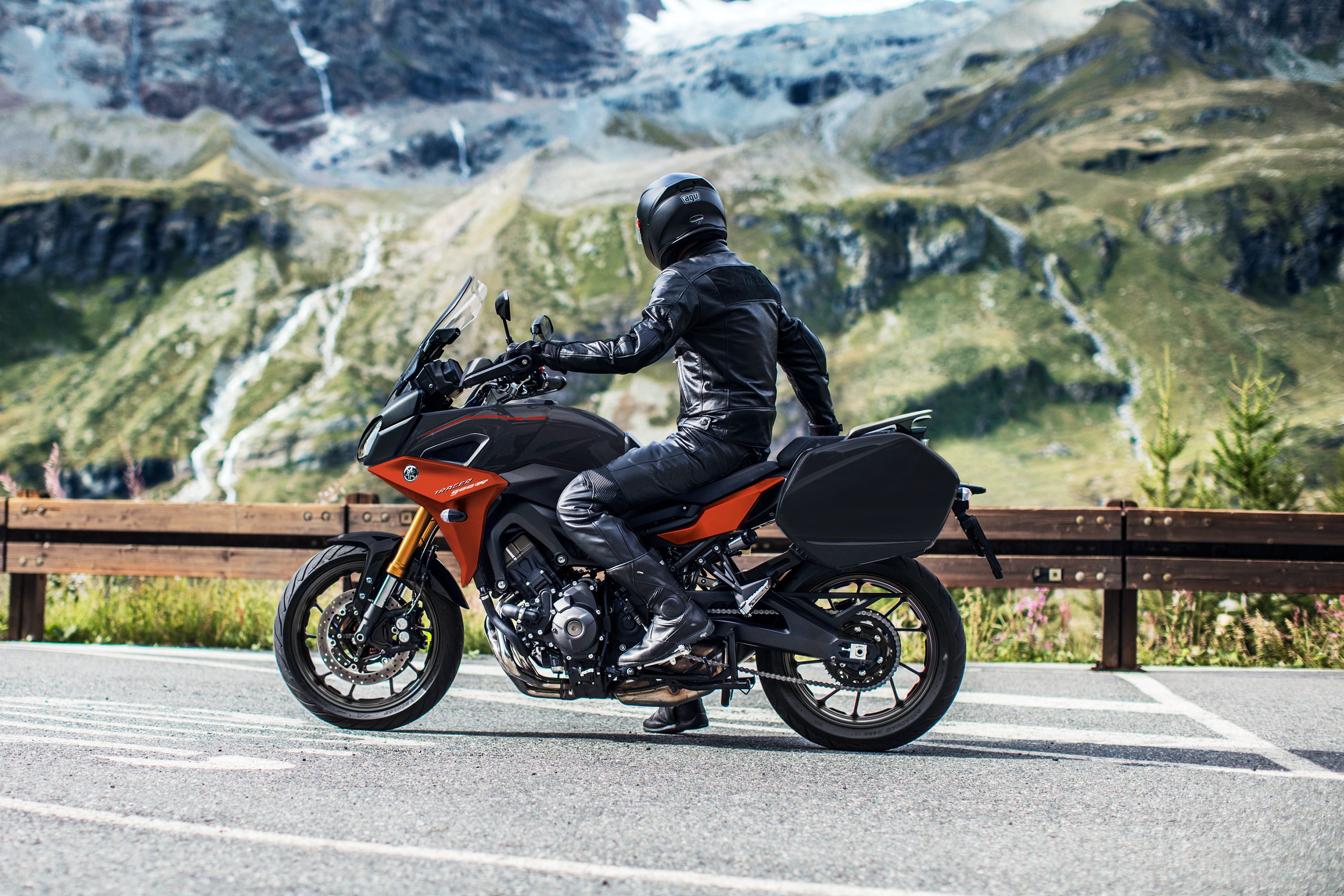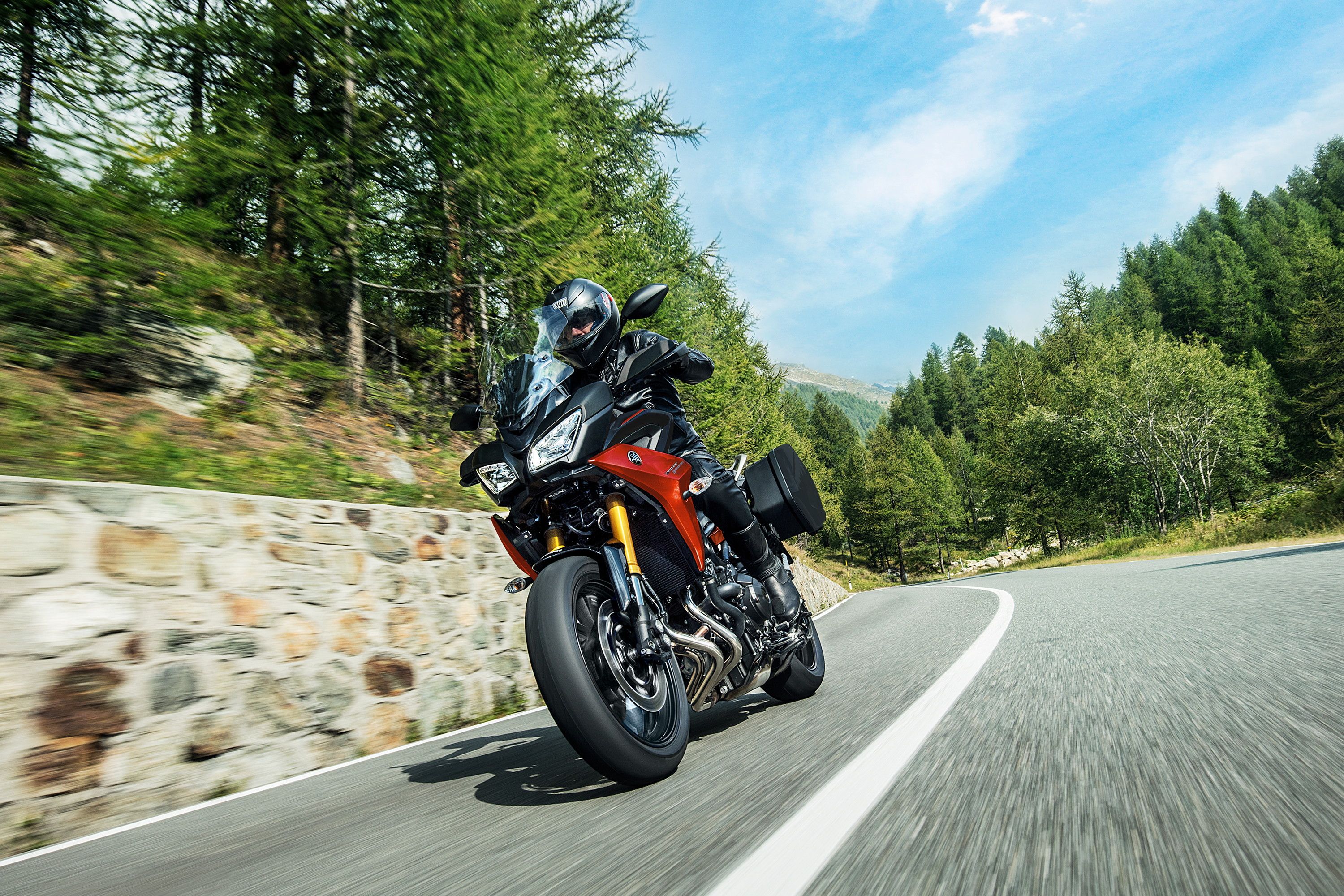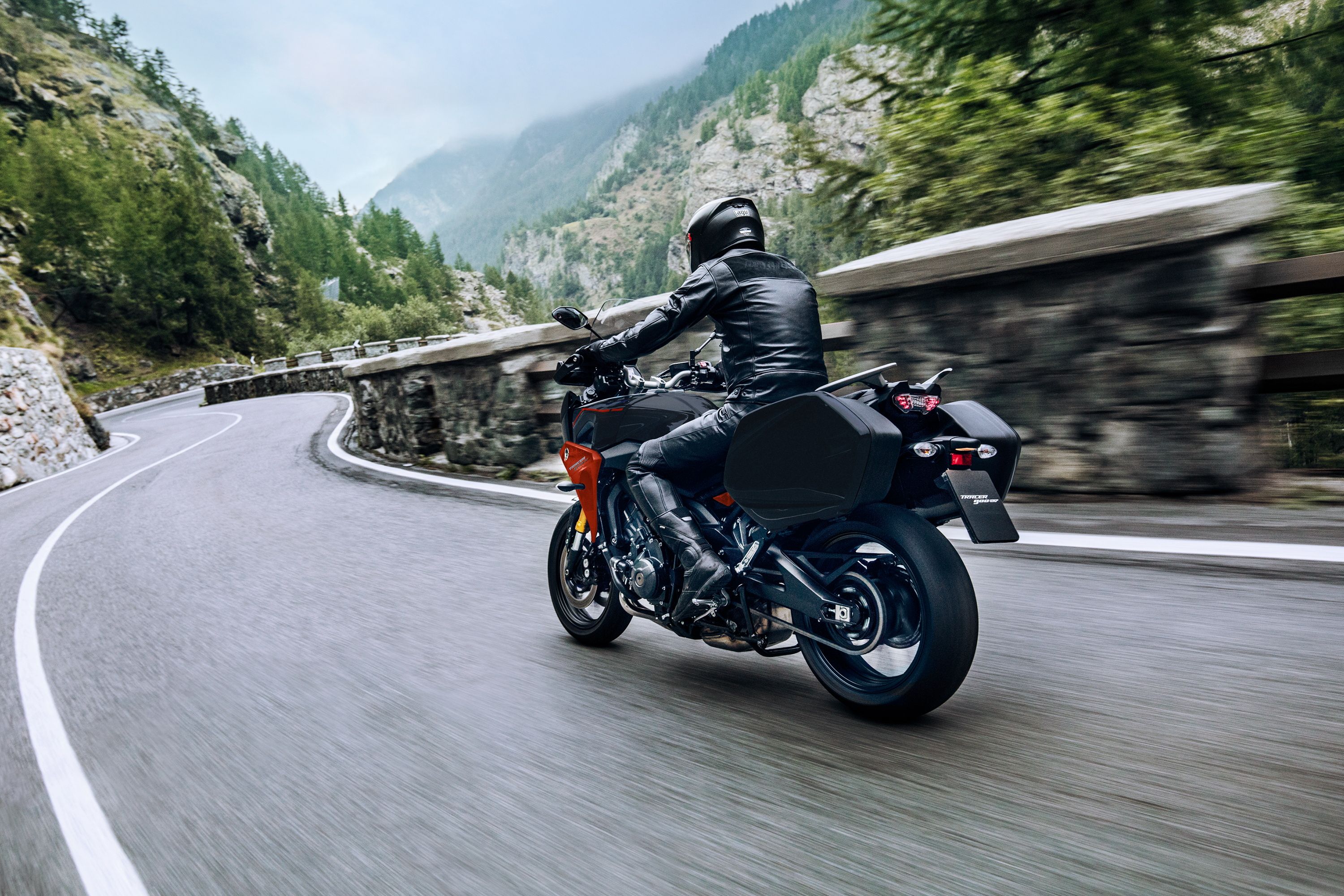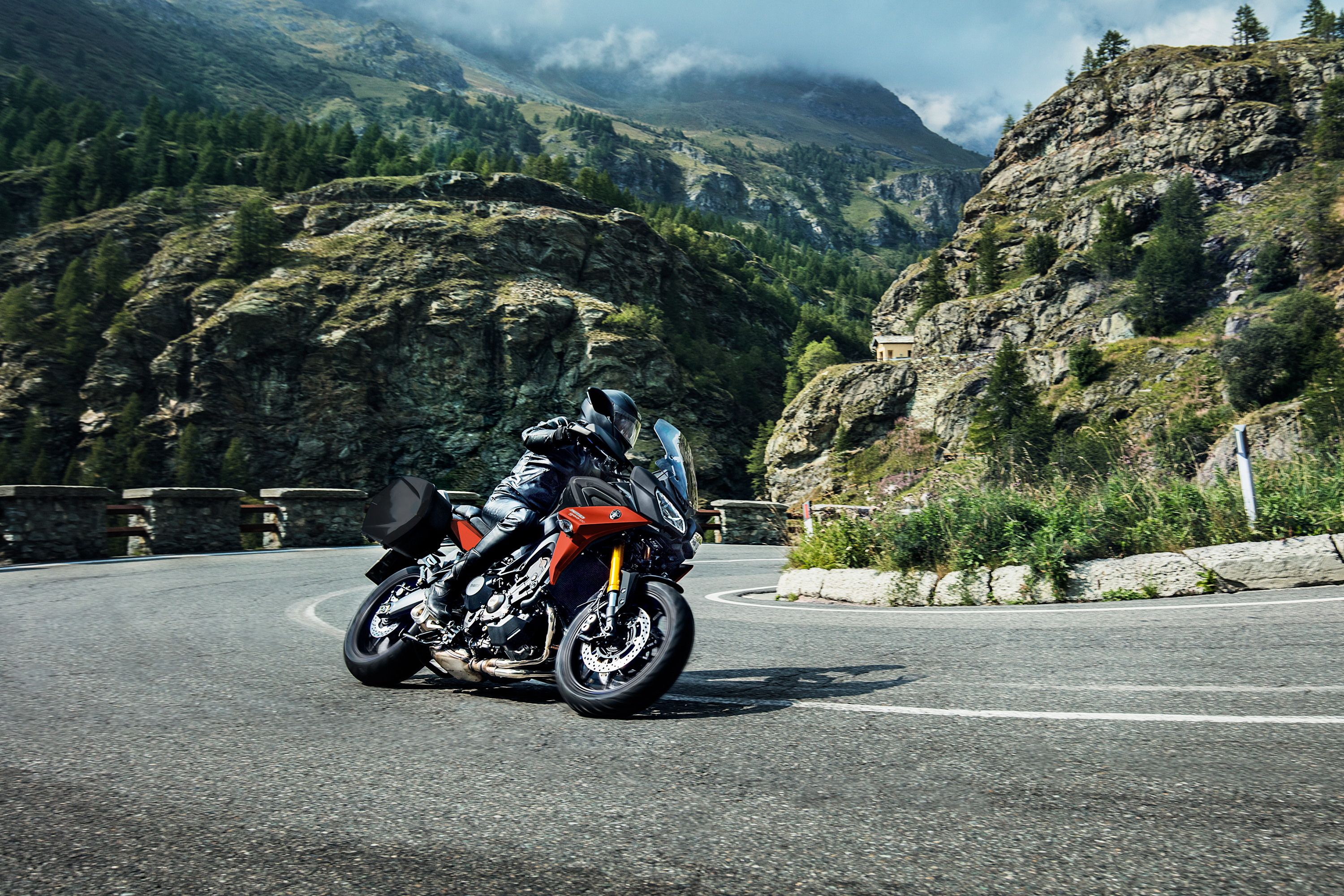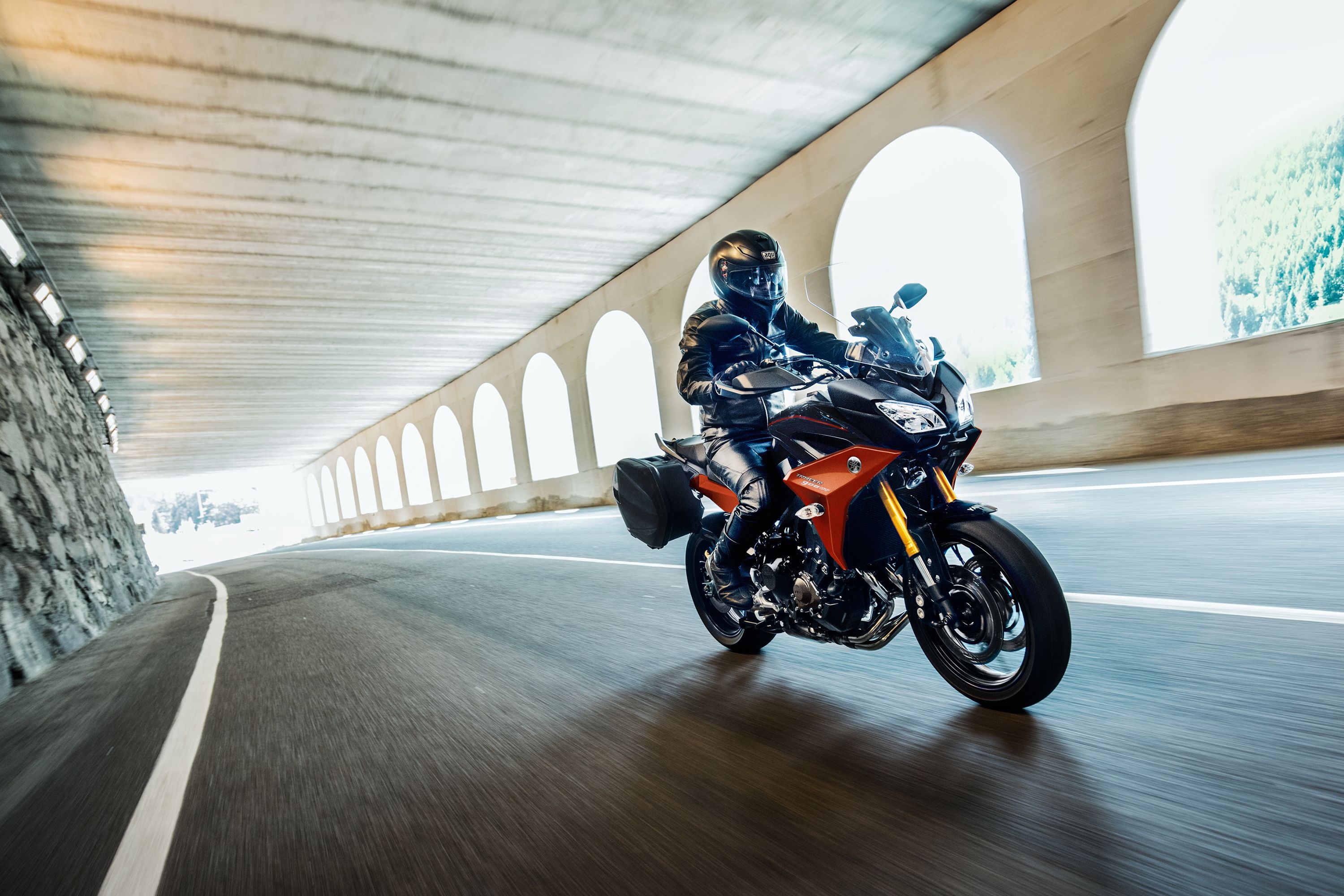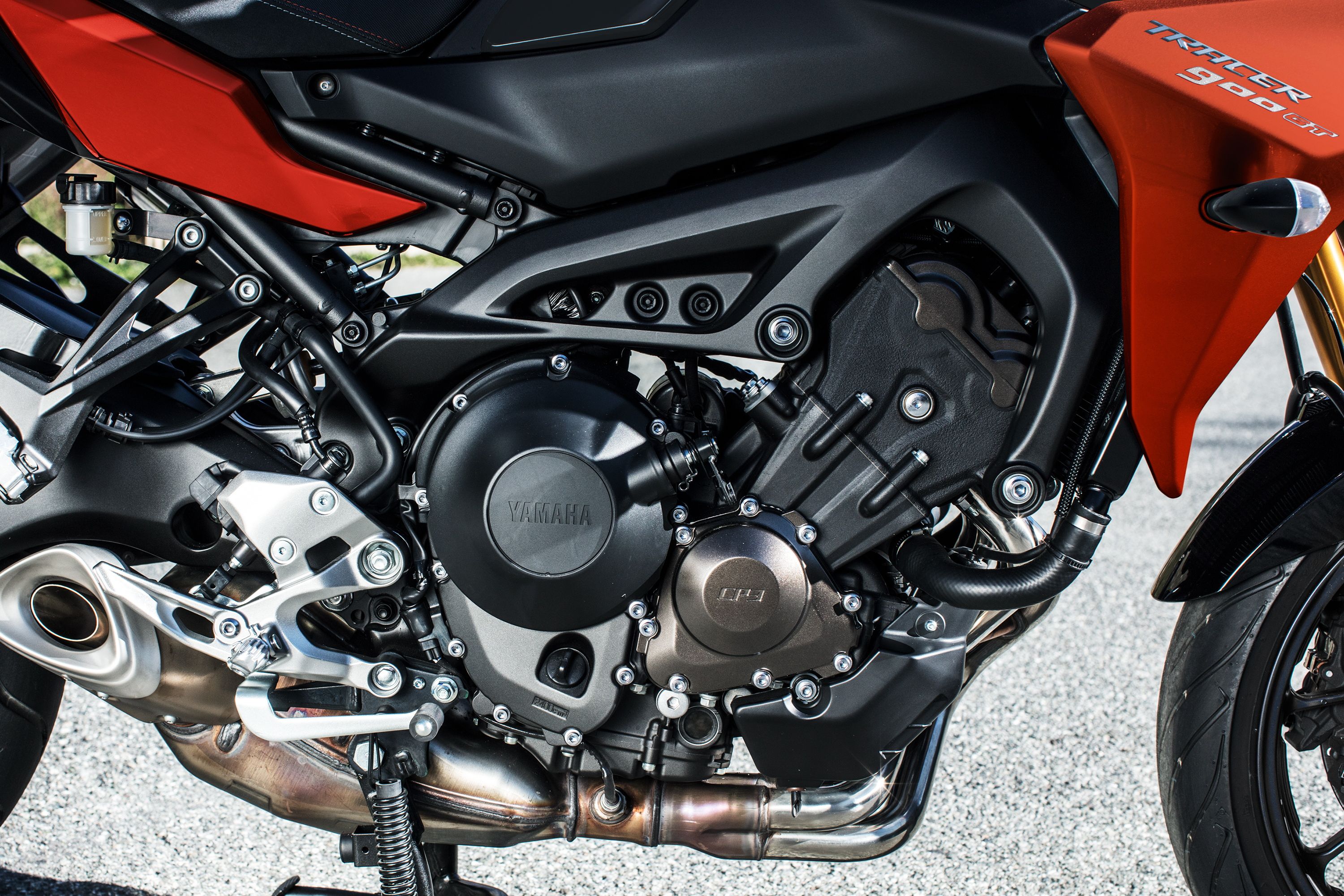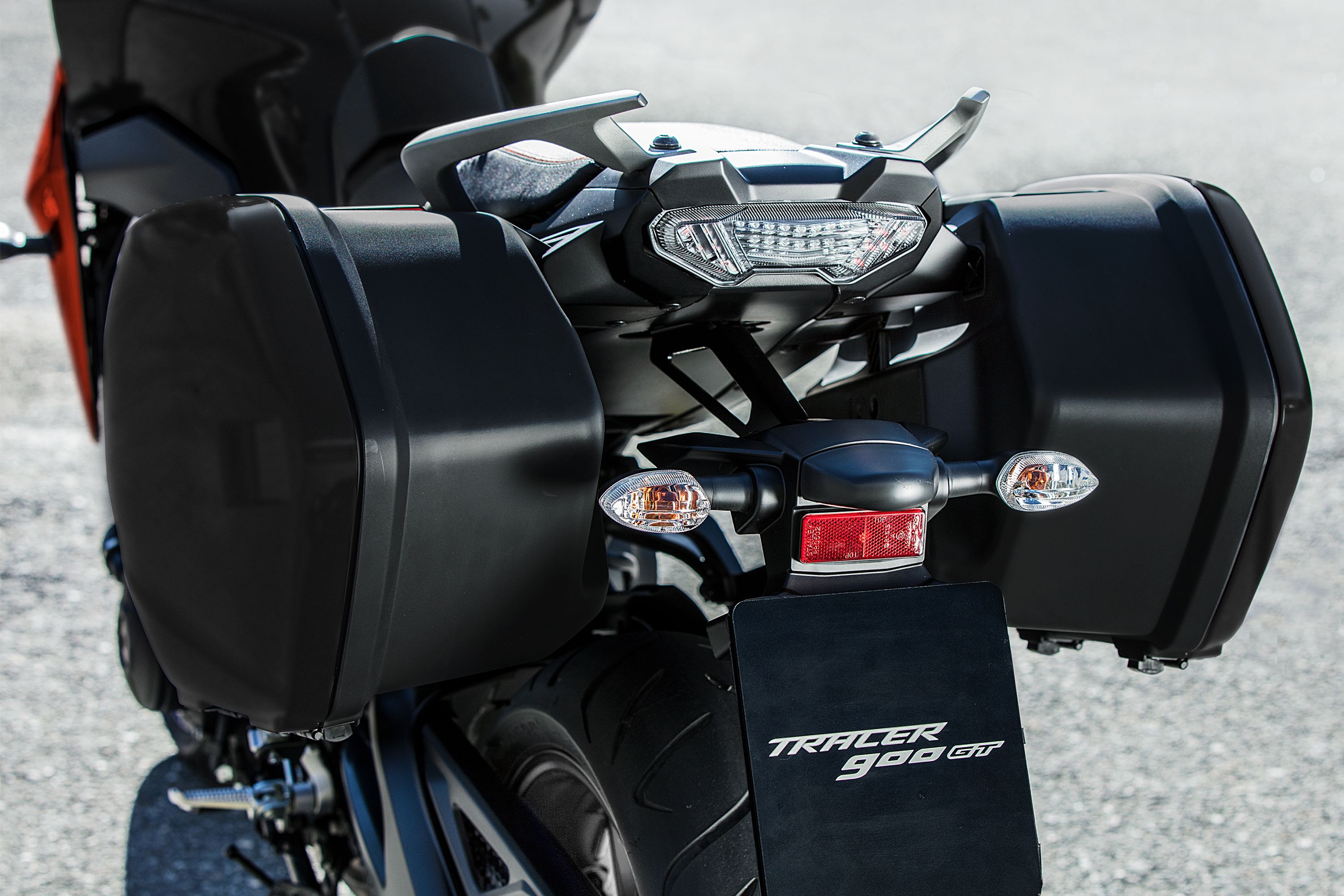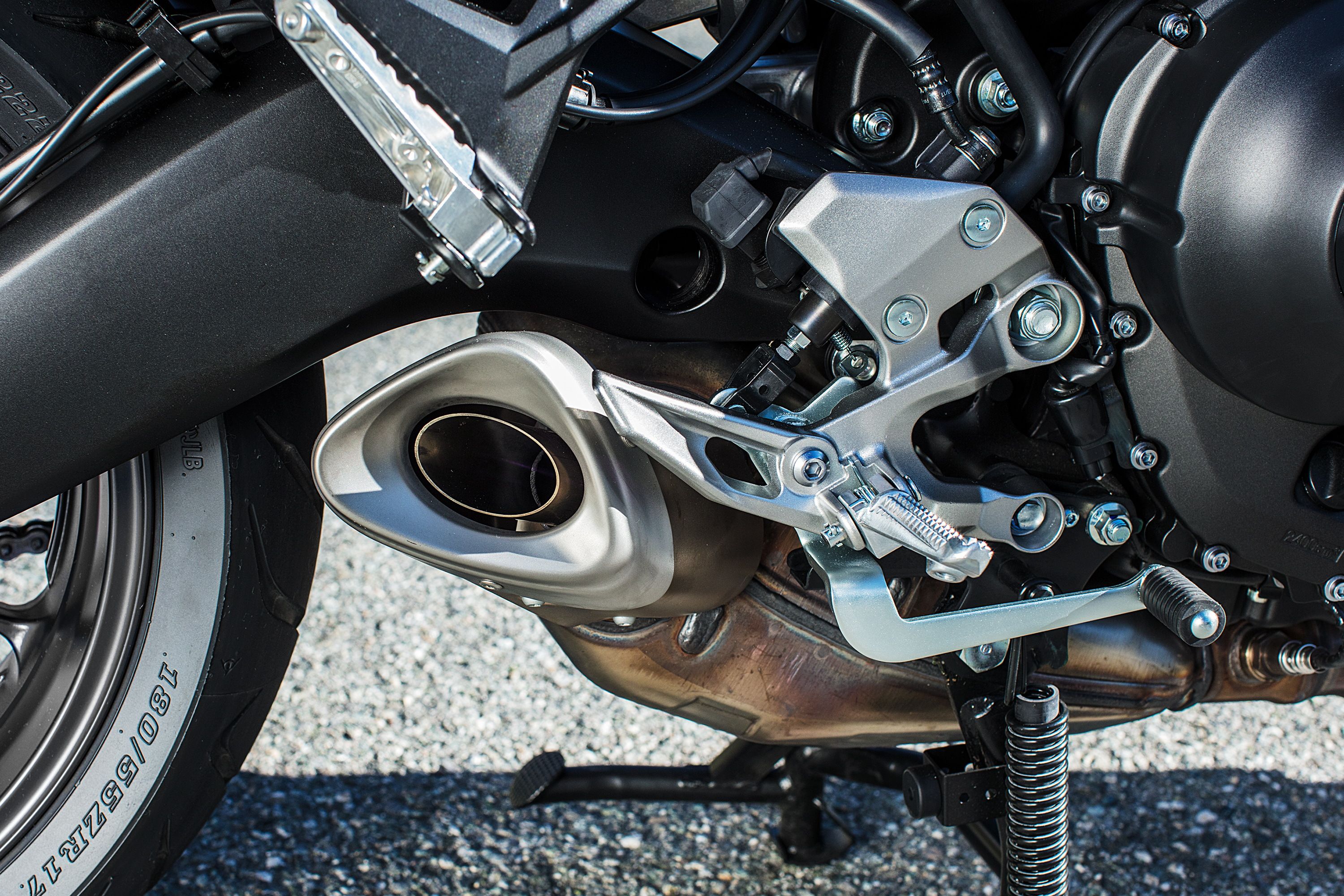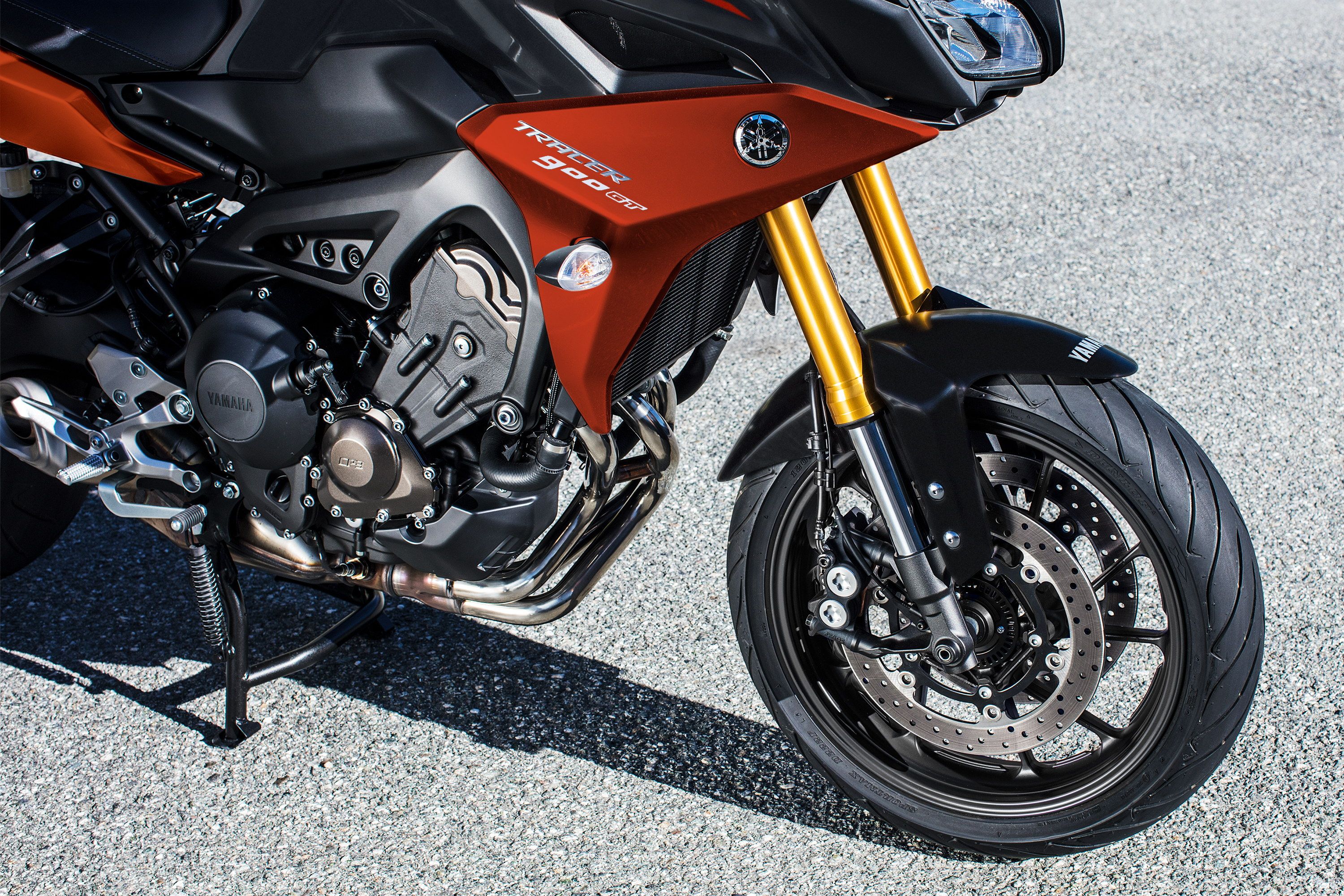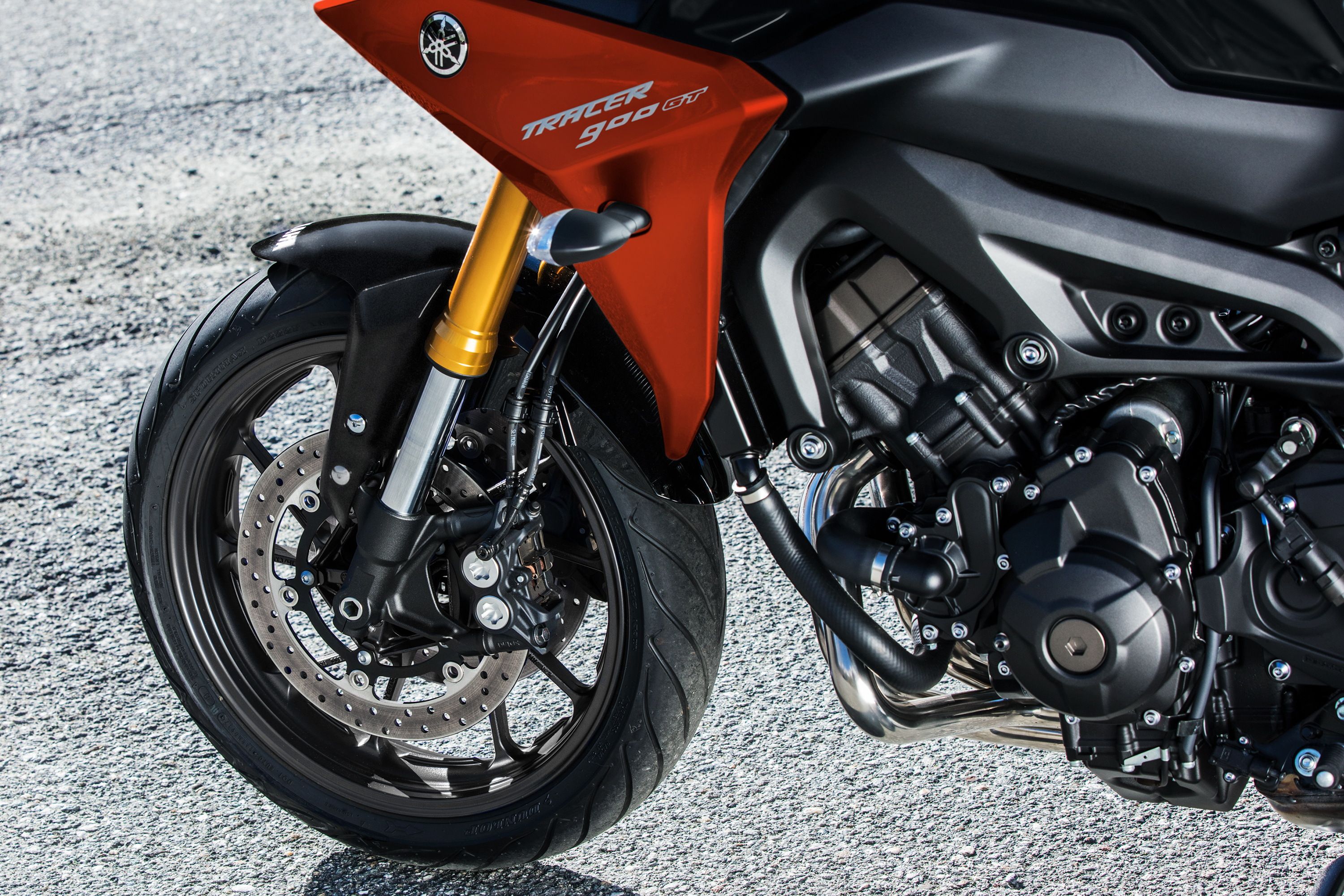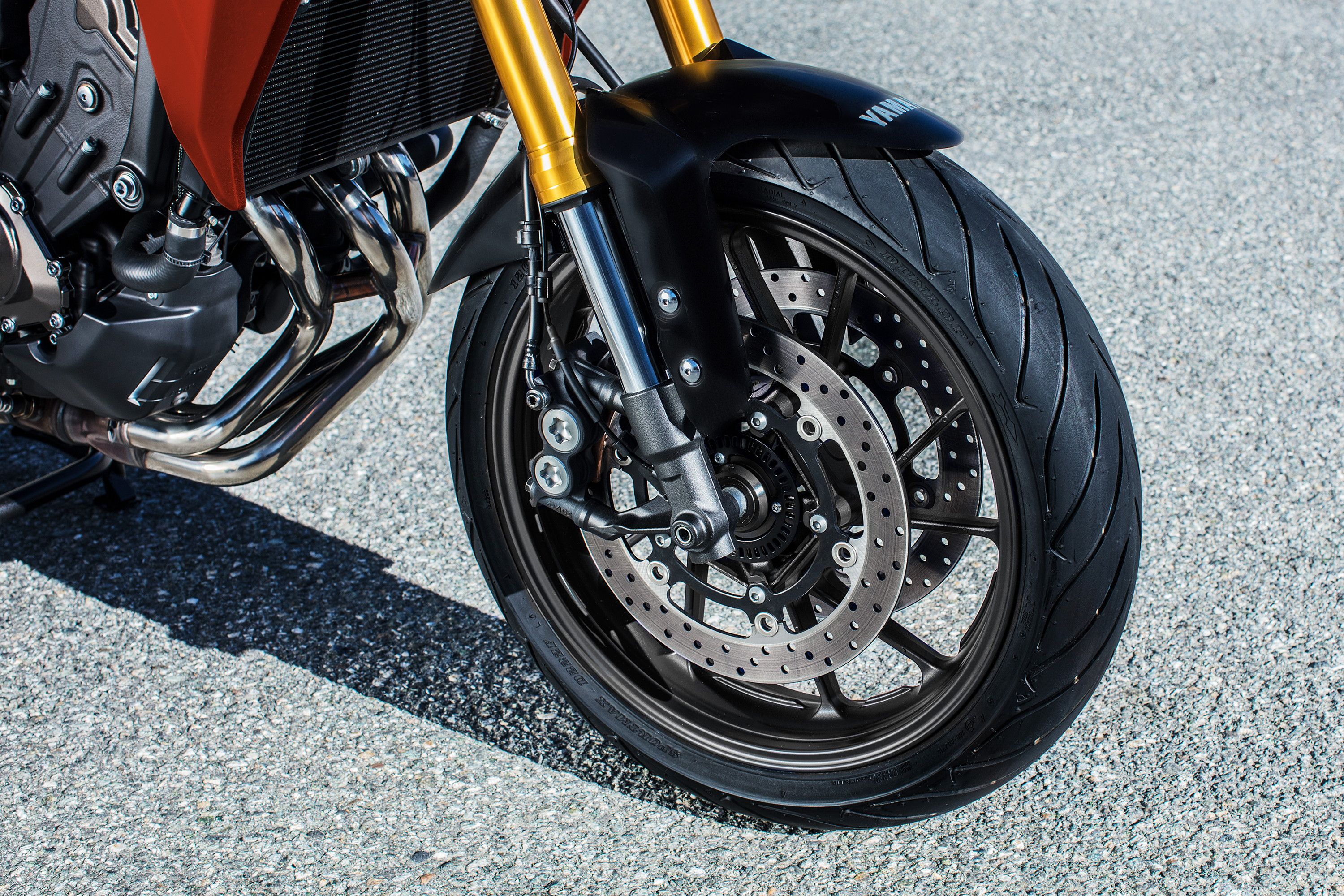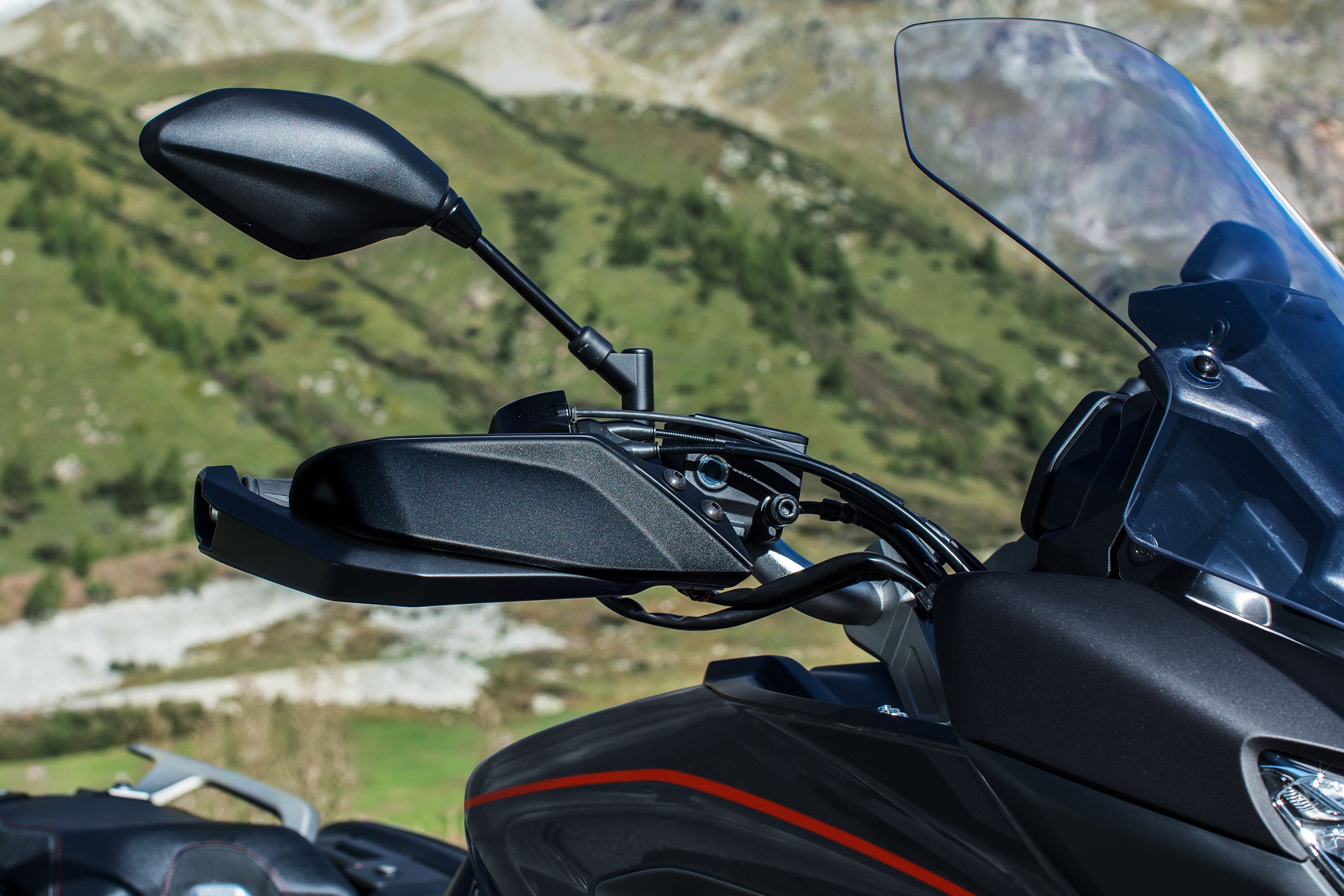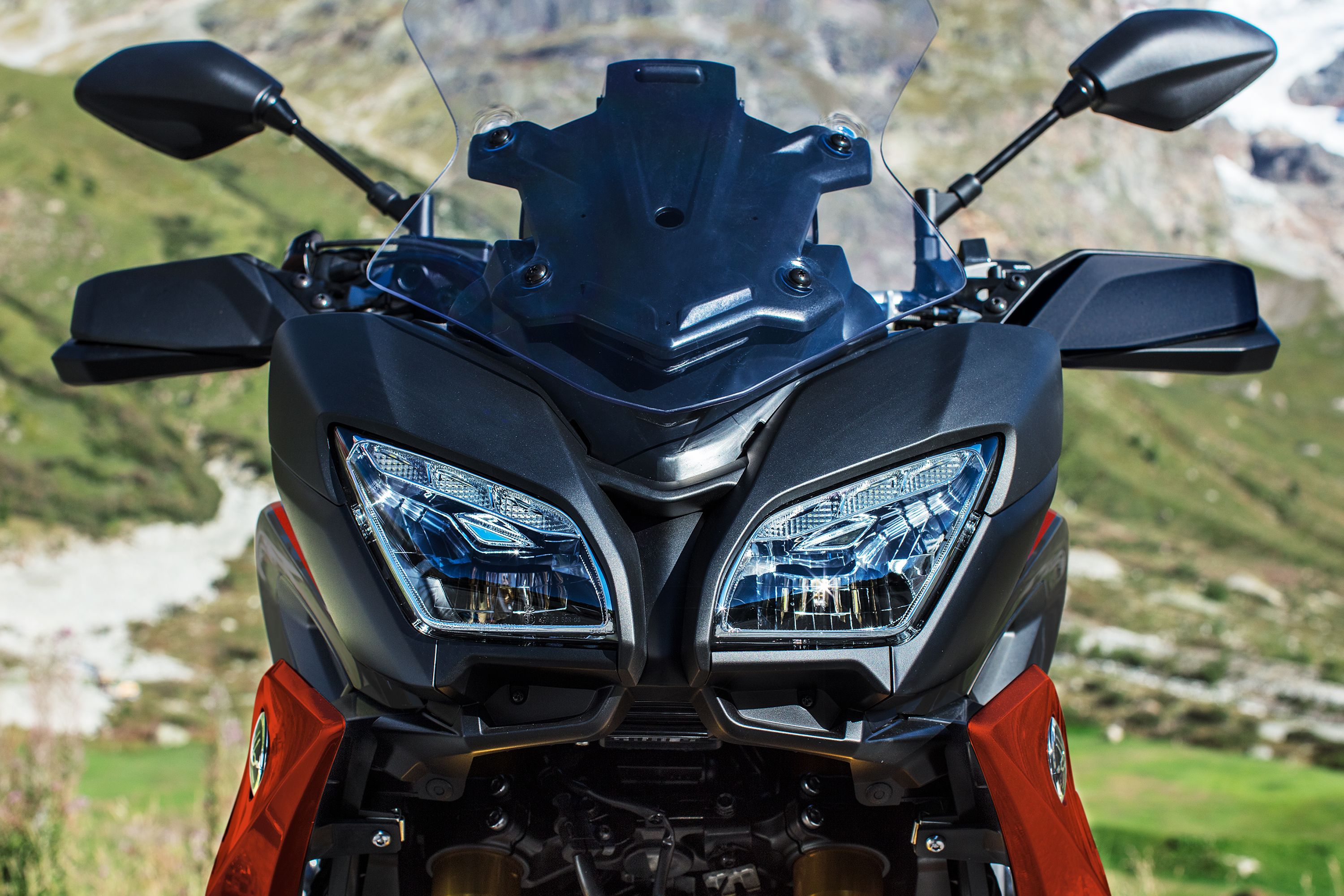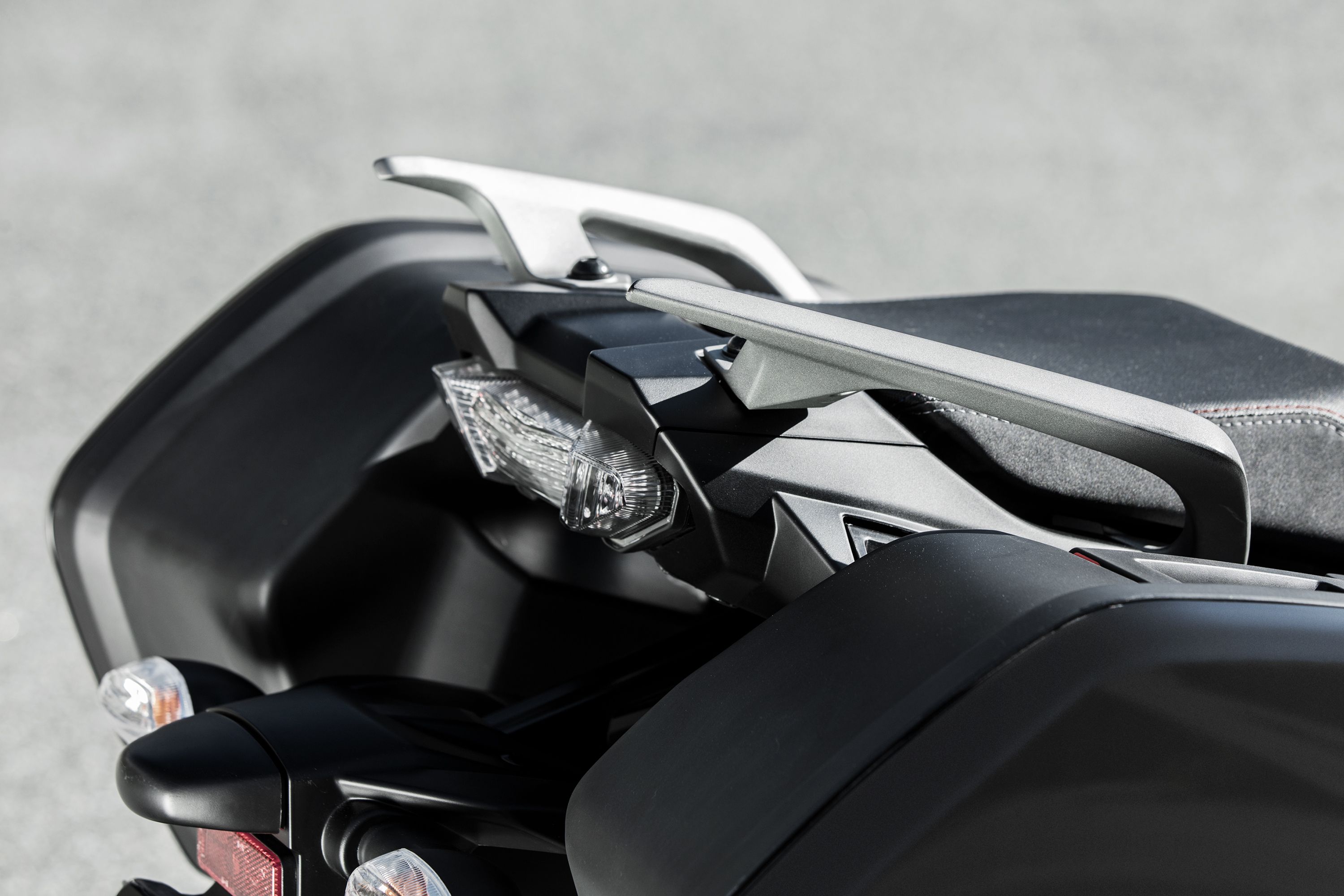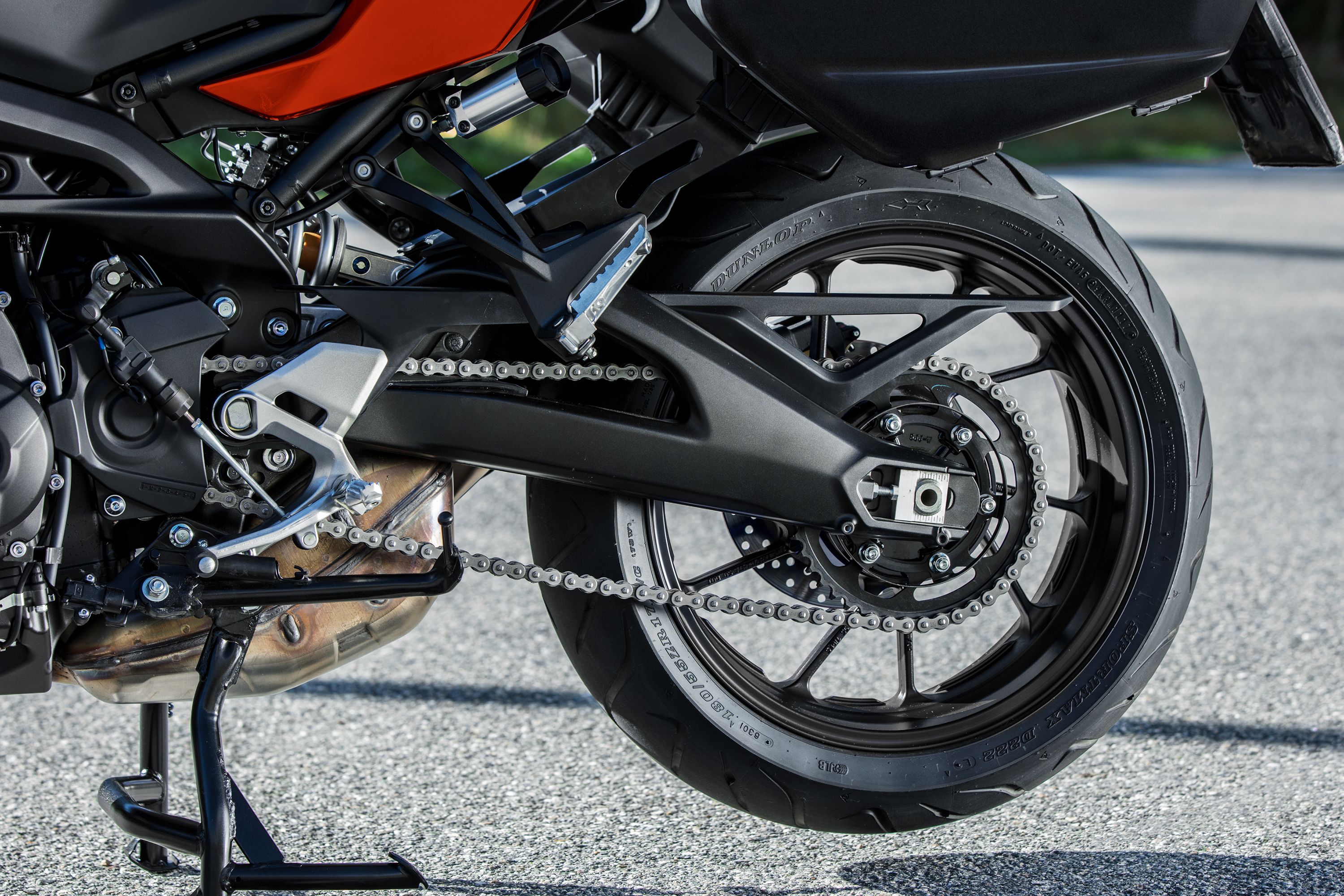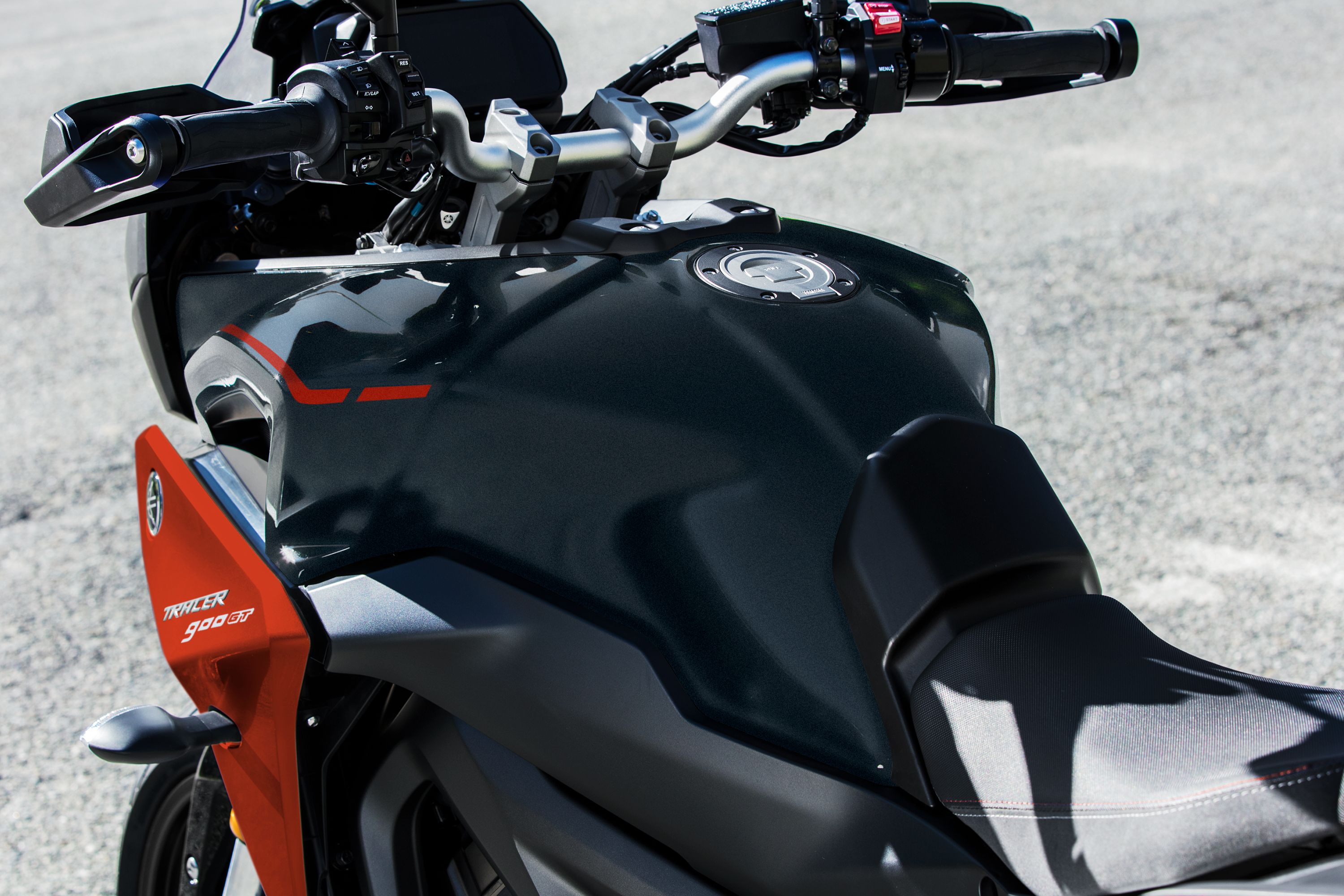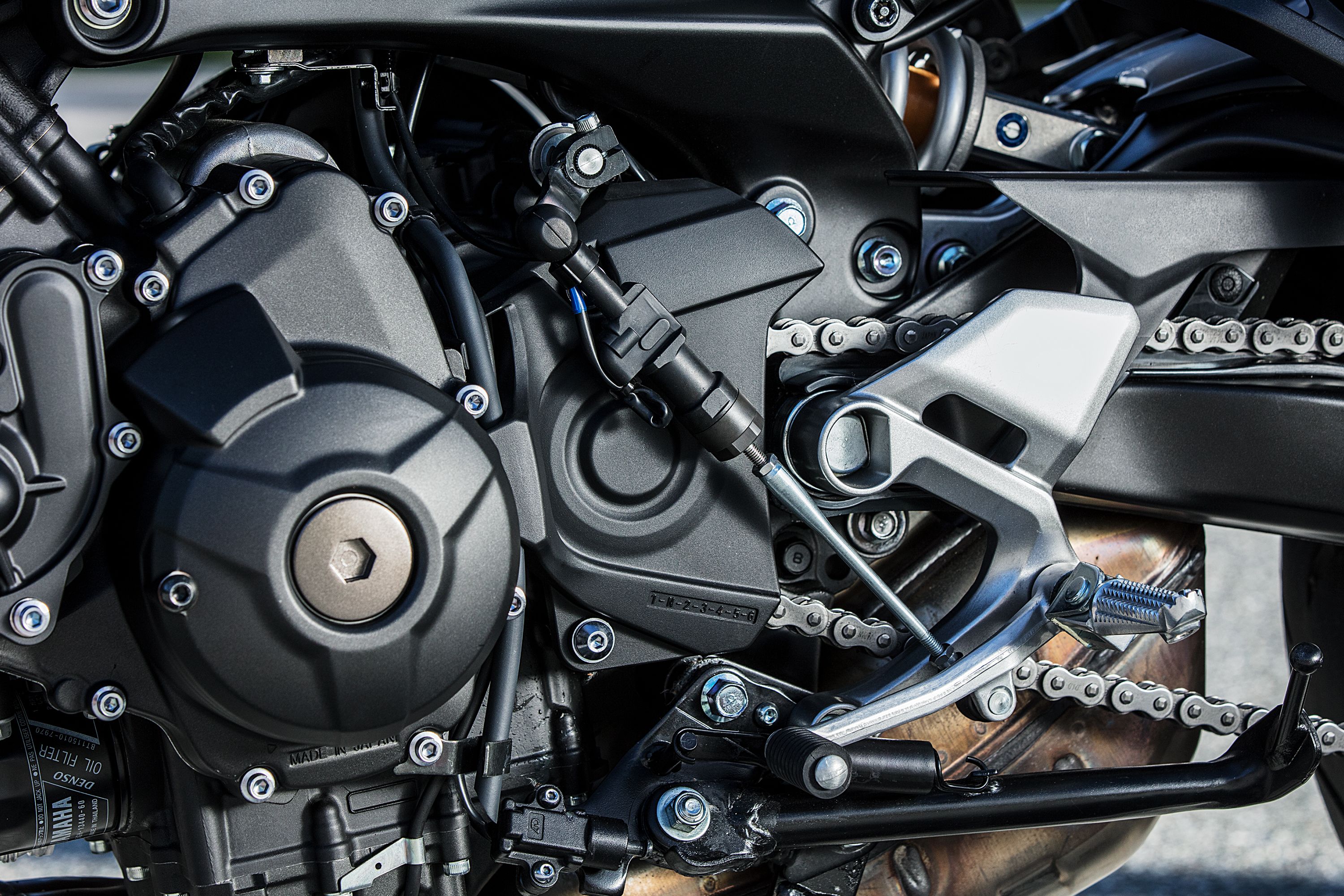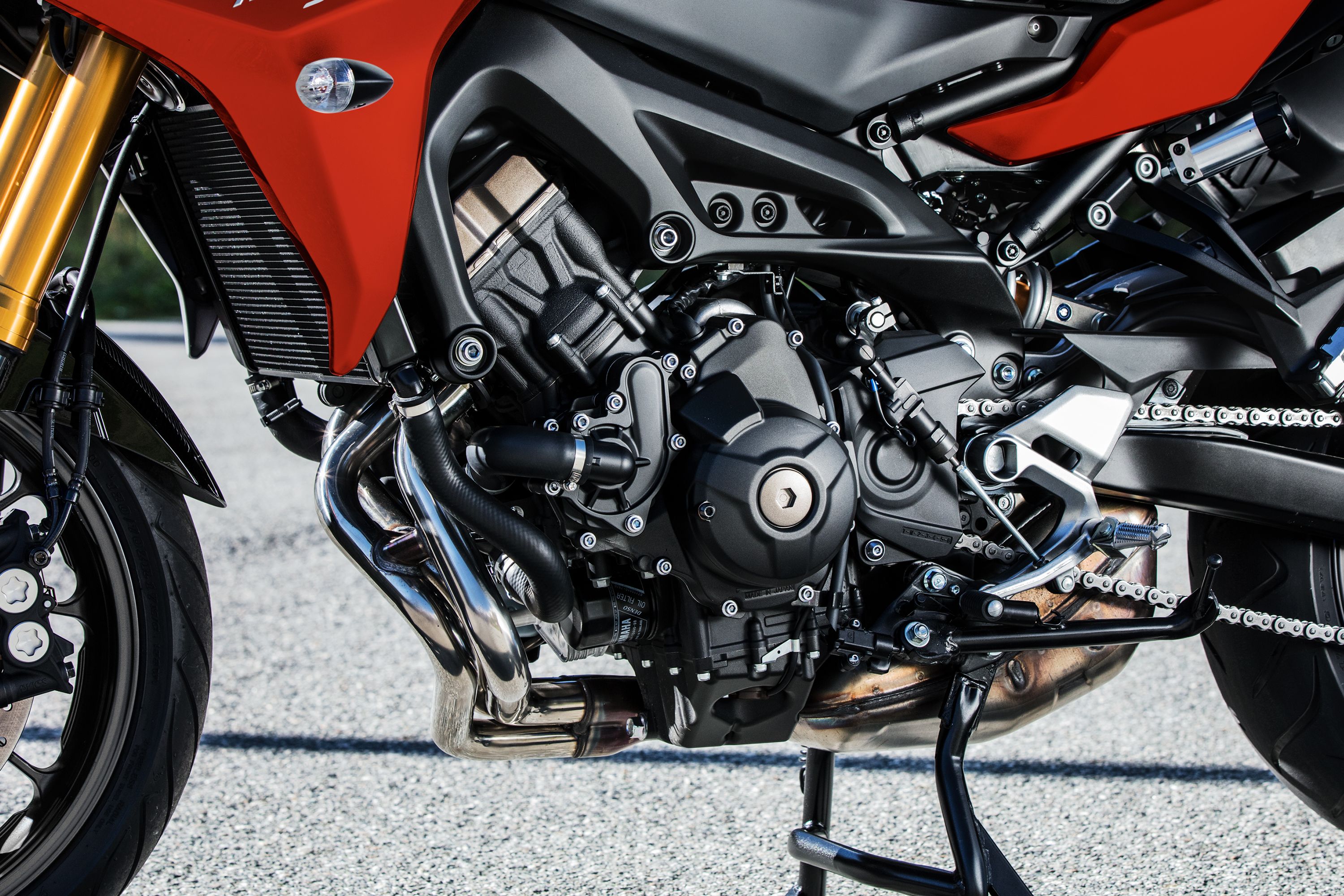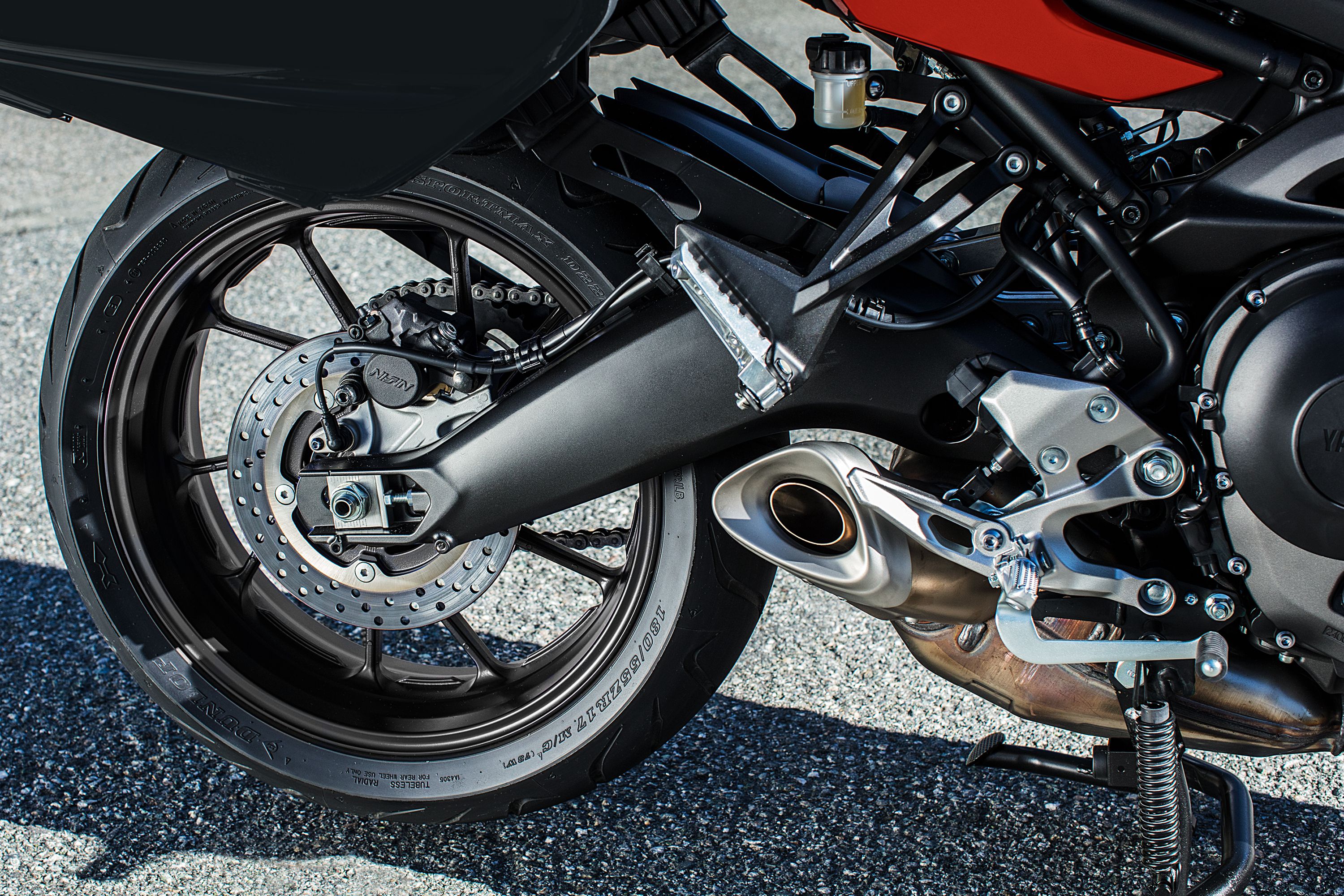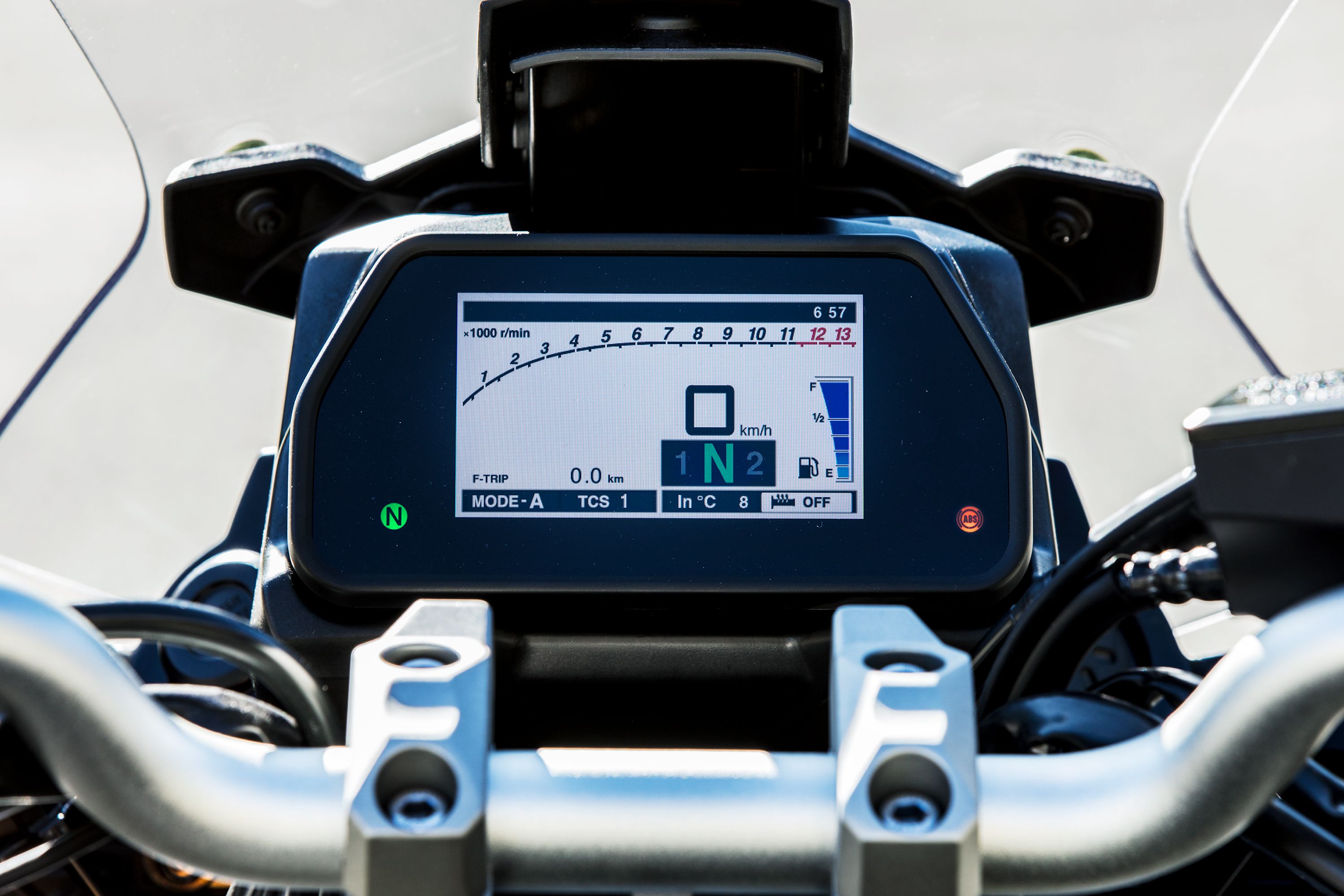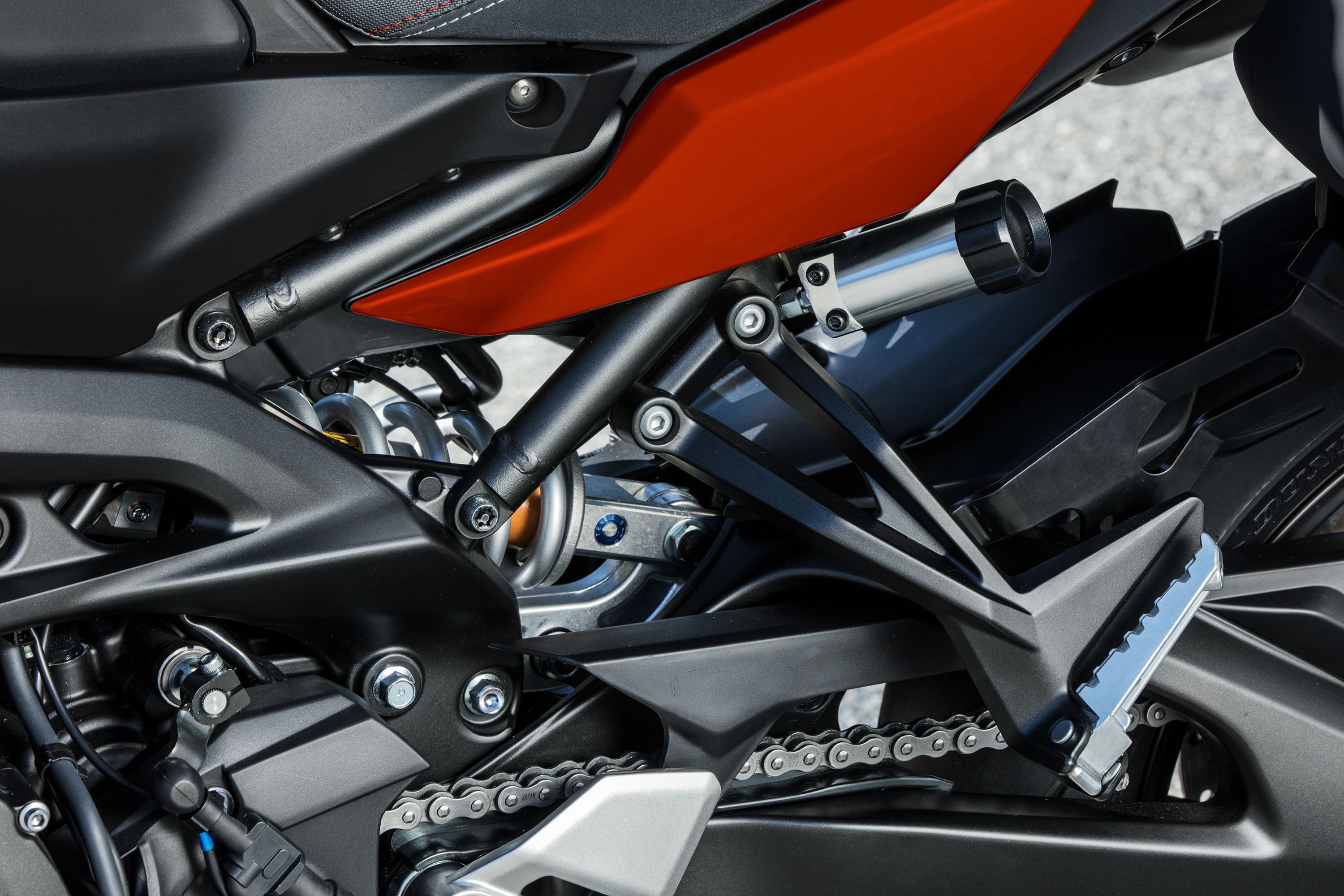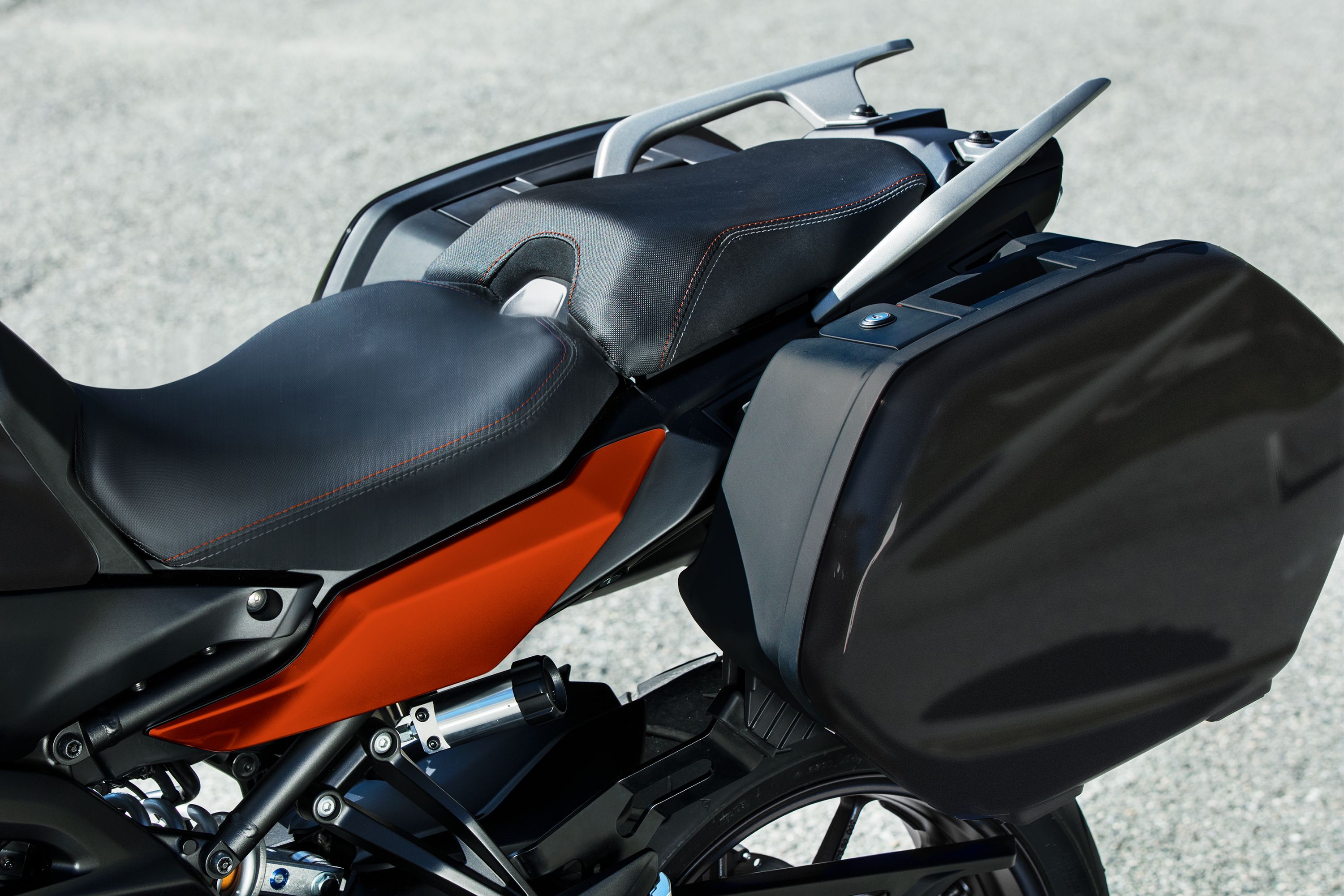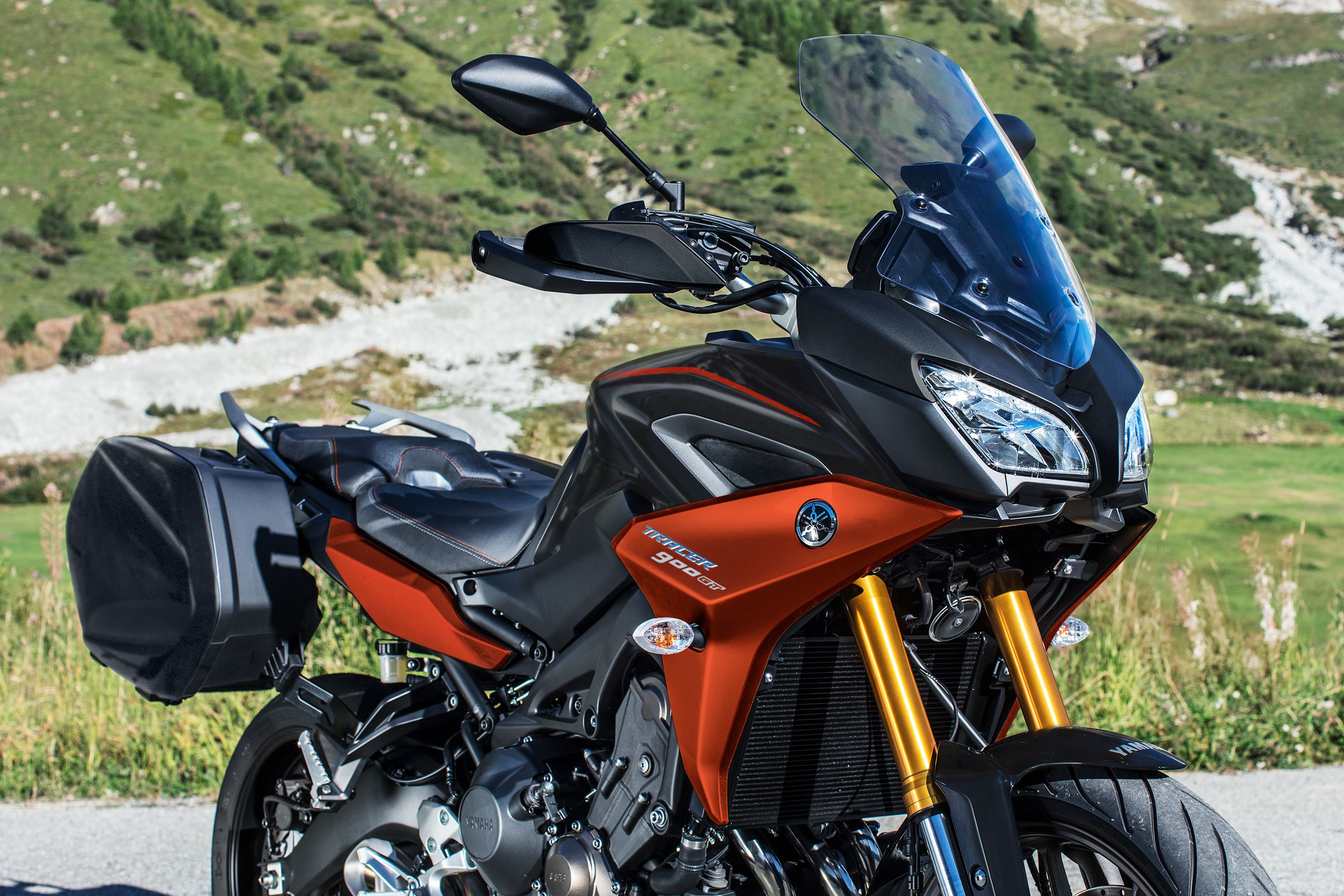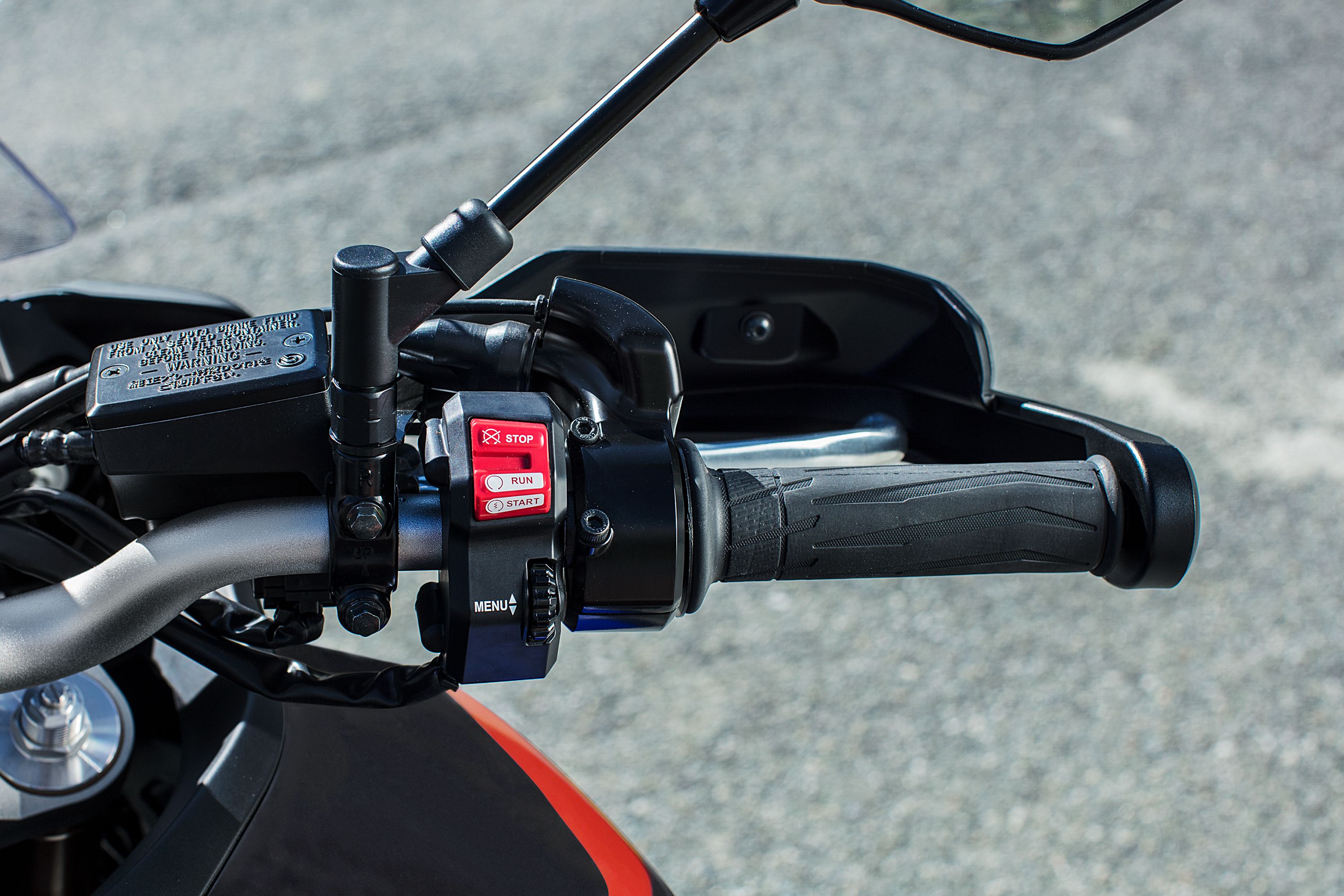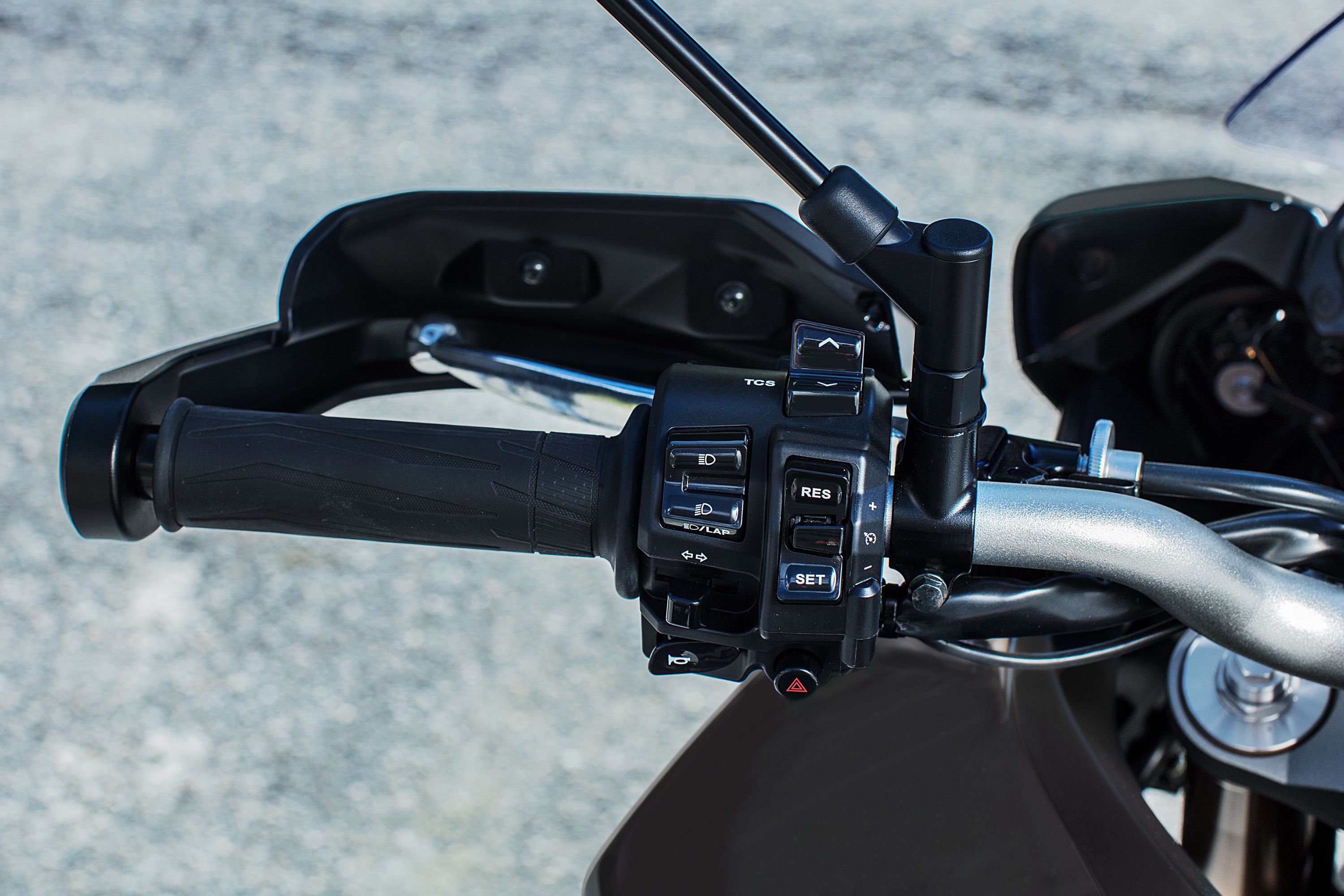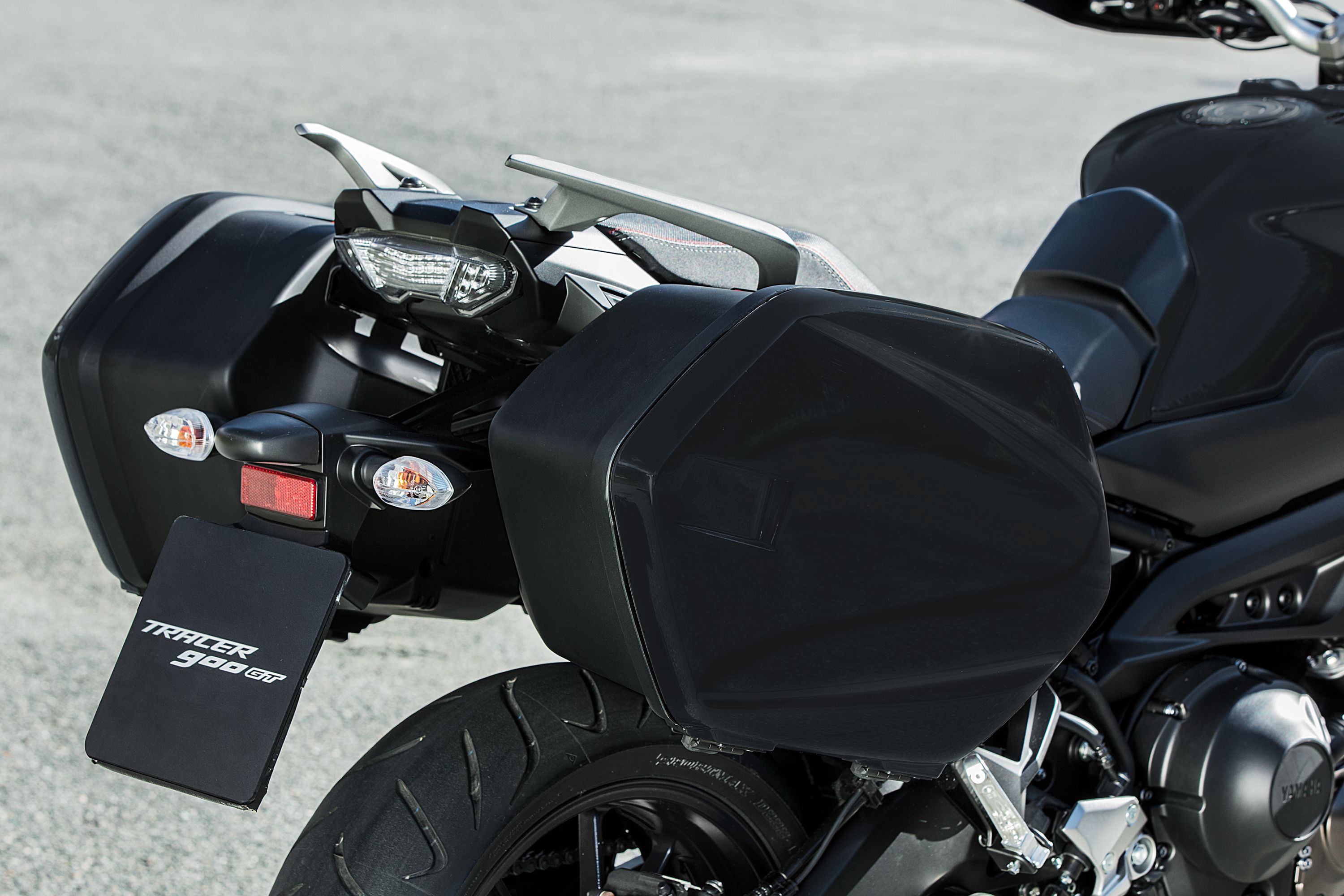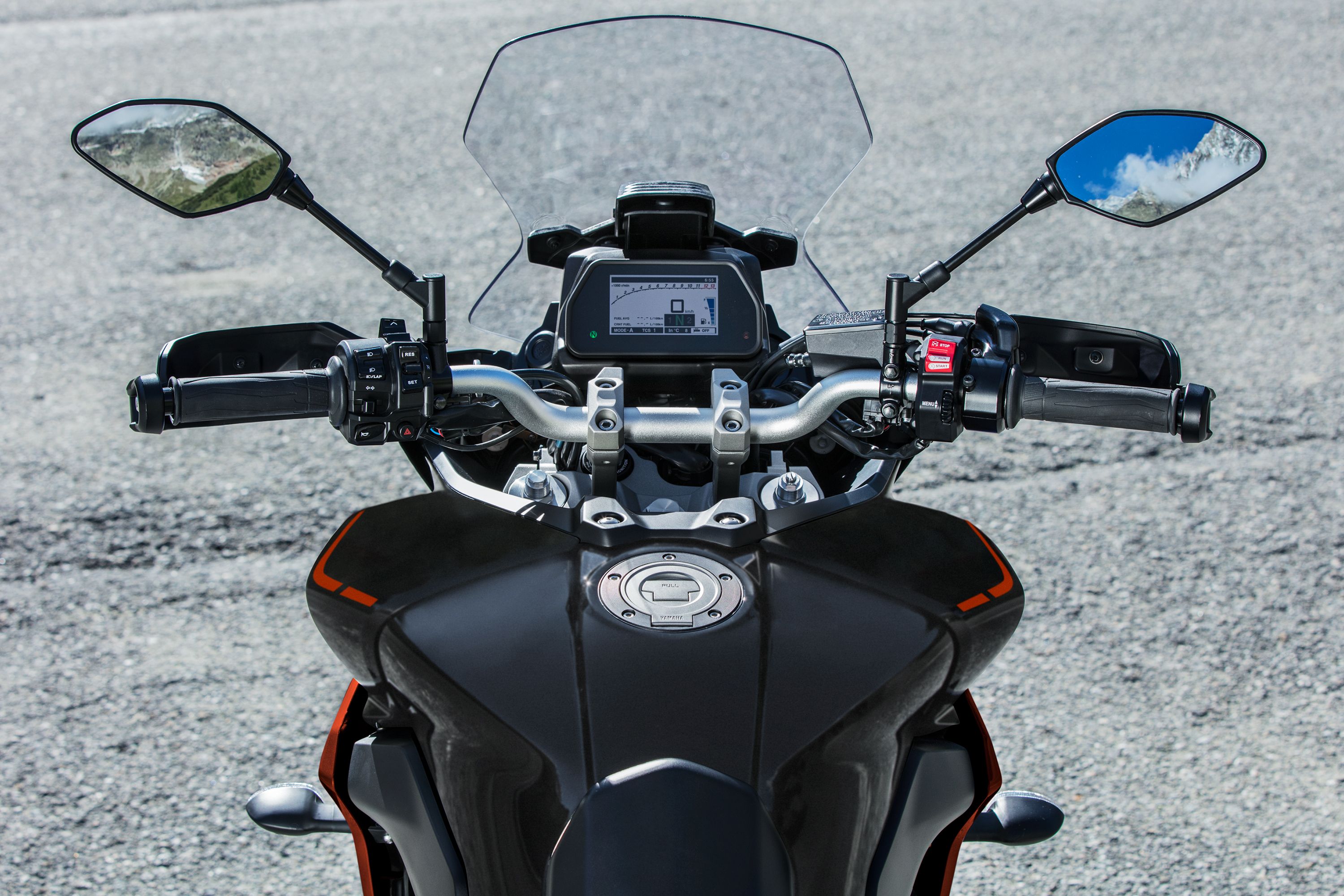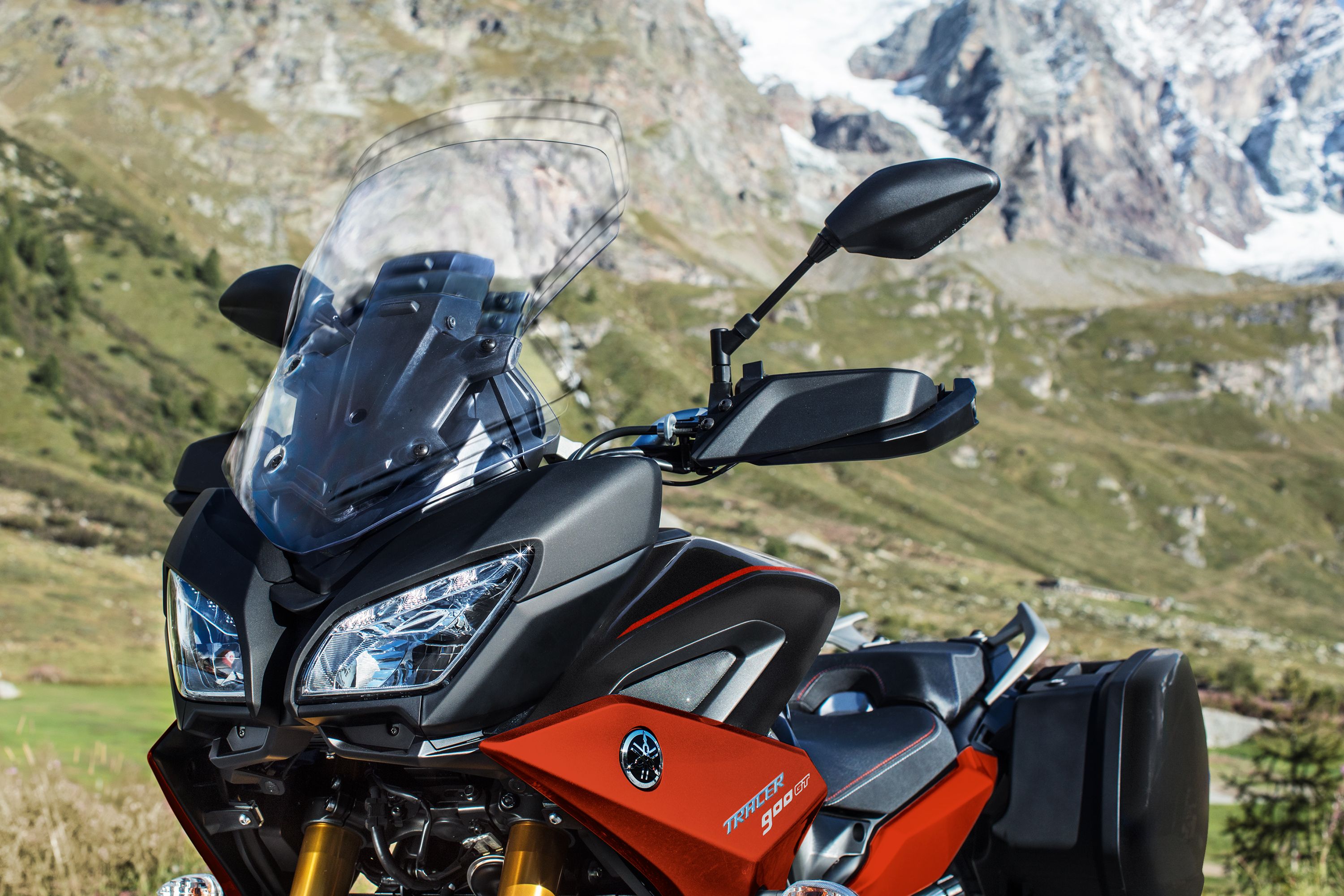Yamaha was busy last year adding a brand-new name and refurbished looks to its lineup with the Tracer 900 and a slightly more tour-tastic Tracer 900 GT. Fans of the FJ models -- and indeed the FZ/MT-09 range -- will recognize the 113-horsepower, 847 cc triple and adventuresome flavor of this new sport-touring family. The base model landed somewhere near the “sport” end of the sport-tour spectrum, though it wasn't carried forward to 2020 in our market. The GT model is a bit more balanced with a set of hard-side panniers that provides some secure dry storage and a host of features that long-distance riders will certainly appreciate.
2019 - 2020 Yamaha Tracer 900 / Tracer 900 GT
- Make: Array
- Model: 2019 - 2020 Yamaha Tracer 900 / Tracer 900 GT
- Engine/Motor: inline-3
- [do not use] Vehicle Model: Array
Yamaha Tracer 900 / 900 GT Design
It seems that the factory tried to rectify some of the less-desirable aspects of the FJ in the new Tracer. First off, the new sheet metal (painted plastic, whatever) brushes up the looks a bit while the hand-adjustable windshield forms a larger pocket to protect the rider from wind and weather. Up front, the split headlights ride in the mask of the fairing with lowers that enclose and protect the sides of the big radiator mounted on the downtubes.
The passenger also gets a break in the form of a lowered set of footpegs for a more relaxed riding position to go with the prominent J.C. handles and elevated pillion pad handles and elevated pillion pad}}; just what you want for a prolonged spell in the saddle. A tucked-under taillight and mudguard/plateholder/turn-signal combo finished out the ride in typical fashion.
Yamaha Tracer 900 / 900 GT Chassis
An aluminum skeleton serves as the bones of the beast in an effort to keep things light on the Tracer 900. To that end, the factory used the engine as a stressed member to eliminate an entire section of the downtube/cradle area.
Cast, 17-inch rims mount a 120/70 hoop up front and a 180/55 out back to round out the rolling chassis with a longer swingarm that improves the sensation of acceleration when you get twisty with it. Wet weight is 474 pounds without the panniers so Yamaha threw on a pair of 298 mm discs up front with a 245 mm in back and ABS protection all around, so you have plenty of brakes there to haul it down in a hurry when you need to.
|
Suspension, Front/ Travel: |
41mm inverted fork, fully adjustable/ 5.4-in travel |
|
Suspension, Rear/ Travel: |
Single shock, adjustable preload (w/remote adjuster) and rebound damping/ 5.6-in travel |
|
Rake (Caster Angle): |
24.0° |
|
Trail: |
3.9 in |
|
Brakes, Front: |
Dual 298 mm hydraulic disc; ABS |
|
Brakes, Rear: |
245 mm hydraulic disc; ABS |
|
Tire, Front: |
120/70ZR17 |
|
Tire, Rear: |
180/55ZR17 |
Yamaha Tracer 900 / 900 GT Drivetrain
Yamaha carries over its proven 847 cc, CP3 powerplant to drive this new generation. The liquid-cooled triple derived from the MT-09 times its 12-valve head with dual over-head cams, and it uses a countershaft to cancel out much of the engine's vibration. As with the other CP3 mills, fracture-split con-rod ends ensure a close-tolerance fit while staggered-length intake funnels broaden the powerband, mainly downward into the mid-range.
Yamaha's proprietary Chip-Controlled Throttle acts as a liason between rider demand and engine capabilities for seamless transitions and hesitation-free riding, plus it enables the cruise control, Drive Mode, and traction-control features. The D-Mode comes with three separate maps for what is essentially three different engines in one, and it reinforces the efforts of the three-mode TC system to keep the rear end firmly planted.
No matter which you choose, the power will flow through a slipper clutch then the stacked-shaft, six-speed transmission before heading to the rear wheel via chain drive. Powerful, flexible and potentially noobie-proof, this engine seems to fit the mission of this sport-touring duo quite nicely.
|
Engine: |
Liquid-cooled, DOHC, inline 3-cylinder; 12 valves |
|
Displacement: |
847 cc |
|
Bore x Stroke: |
78.0 mm x 59.1 mm |
|
Compression Ratio: |
11.5:1 |
|
Power: |
113.5 hp (84.6kW) @ 10,000 rpm |
|
Torque: |
64.5 lb-ft (87.5Nm) @ 8,500 rpm |
|
Fuel Delivery: |
Fuel injection with YCC-T |
|
Ignition: |
TCI: Transistor Controlled Ignition |
|
Transmission: |
6-speed, multiplate assist and slipper clutch |
|
Final Drive: |
O-ring chain |
Yamaha Tracer 900 / 900 GT Pricing
MSRP for the 2019 Tracer 900 was $10,999 with the GT $2k more. Even thought the base model didn't carry over here to 2020, MSRP on the GT is holding steady at last year's price.
|
Warranty: |
1 year limited factory warranty |
|
Color: |
|
|
└ 2019: |
Tracer 900: Armor Gray, Tracer 900 GT: Raven |
|
└ 2020: |
Tracer 900 GT: Matte Raven Black/Reddish Copper |
|
Price: |
|
|
└ 2019: |
Tracer 900: $10,999, GT: $12,999 |
|
└ 2020: |
Tracer 900 GT: $12,999 |
Yamaha Tracer 900 / 900 GT Competitors
I reckon Kawasaki's Versys 1000 SE LT+ is likely to appeal to the same sort of buyer as would the Tracer 900 GT. The looks are certainly close enough; kind of the same dish but with different spices, if you will. Where the GT leans toward the sport-tour end of the spectrum, the LT falls closer to the adventure bike end. The differences are subtle, but they're there all the same.
Kawasaki Versys 1000 SE LT+
Across the board these bikes sport front fairings complete with tall windshields plus handguards, and panniers to make both ready to hit the interstate right off the showroom floor. Kawasaki delivers a superior suspension package with the full trinity of adjustments controlled automatically through the new Kawasaki Electronic Control Suspension system against the manually-adjusted Yamaha for a significant advantage. Kawi also steps up the pressure in the anchors with the Kawasaki Intelligent Braking System that delivers supersport-tuned ABS protection for a leg up over Yamaha's vanilla ABS feature.
One big advantage the Versys enjoys is the cubeage tucked away in its powerplant. At 1,043 cc, you know it's going to put out more grunt, and it does with 75.2 pound-feet versus 65-pounds from the GT. The Versys also delivers a robust electronics suite in the engine-control department with TC, Drive Modes and a Quick Shifter to meet the Tracer GT, tit-for-tat.
Read our full review of the Kawasaki Versys 1000 SE LT+.
He Said
“In the end, the Tracer 900 GT looks like a much better bike, even if it winds up at the same pricing point as the Versys. I gotta' say I'm lovin' the adjustable suspension/TC/rider modes; such features make the machine into several different bikes in one, and flexibility like that diminishes the need for multiple bikes as your skill level increases or as you look for different riding characteristics. While it's cool that Yamaha tossed some bags at the GT version, they still don't get that for Americans, it really ain't a tour bike unless it's got some baggage.”
She Said
My wife and fellow motorcycle writer, Allyn Hinton, says, “Yamaha dropped the FJ-09 here last year and is bringing the Tracer that was revamped in the Euro market into our market next year. The revamp brought a lighter feeling ride, nice wide handlebars, and a comfortable seating position, even though the seat itself seems a bit hard. Other than the riding position, it really feels like a sportbike. Your feet aren't tucked up, but neither are they under you in the seated position; so sportbike-ish. This makes for a nice all-around bike, like it's not really dedicated to any one label.”
Yamaha Tracer 900 / 900 GT Specifications
|
Engine & Drivetrain: |
|
|
Engine: |
Liquid-cooled, DOHC, inline 3-cylinder; 12 valves |
|
Displacement: |
847 cc |
|
Bore x Stroke: |
78.0 mm x 59.1 mm |
|
Compression Ratio: |
11.5:1 |
|
Power: |
113.5 hp (84.6kW) @ 10,000 rpm |
|
Torque: |
64.5 lb-ft (87.5Nm) @ 8,500 rpm |
|
Fuel Delivery: |
Fuel injection with YCC-T |
|
Ignition: |
TCI: Transistor Controlled Ignition |
|
Transmission: |
6-speed, multiplate assist and slipper clutch |
|
Final Drive: |
O-ring chain |
|
Chassis: |
|
|
Suspension, Front/ Travel: |
41mm inverted fork, fully adjustable/ 5.4-in travel |
|
Suspension, Rear/ Travel: |
Single shock, adjustable preload (w/remote adjuster) and rebound damping/ 5.6-in travel |
|
Rake (Caster Angle): |
24.0° |
|
Trail: |
3.9 in |
|
Brakes, Front: |
Dual 298 mm hydraulic disc; ABS |
|
Brakes, Rear: |
245 mm hydraulic disc; ABS |
|
Tire, Front: |
120/70ZR17 |
|
Tire, Rear: |
180/55ZR17 |
|
Dimensions & Capacities: |
|
|
L x W x H: |
85.0 in x 33.5 in x 54.1 in – 56.3 in |
|
Seat Height: |
33.5 or 34.1 |
|
Wheelbase: |
59.1 in |
|
Maximum Ground Clearance: |
5.3 in |
|
Fuel Capacity: |
4.8 gal |
|
Fuel Economy: |
TBD |
|
Wet Weight: |
474 lb (without panniers) |
|
Top Speed: |
140 mph (est) |
|
Details: |
|
|
Warranty: |
1 year limited factory warranty |
|
Color: |
|
|
└ 2019: |
Tracer 900: Armor Gray, Tracer 900 GT: Raven |
|
└ 2020: |
Tracer 900 GT: Matte Raven Black/Reddish Copper |
|
Price: |
|
|
└ 2019: |
Tracer 900: $10,999, GT: $12,999 |
|
└ 2020: |
Tracer 900 GT: $12,999 |
Further Reading
Yamaha
Read more Yamaha news.

